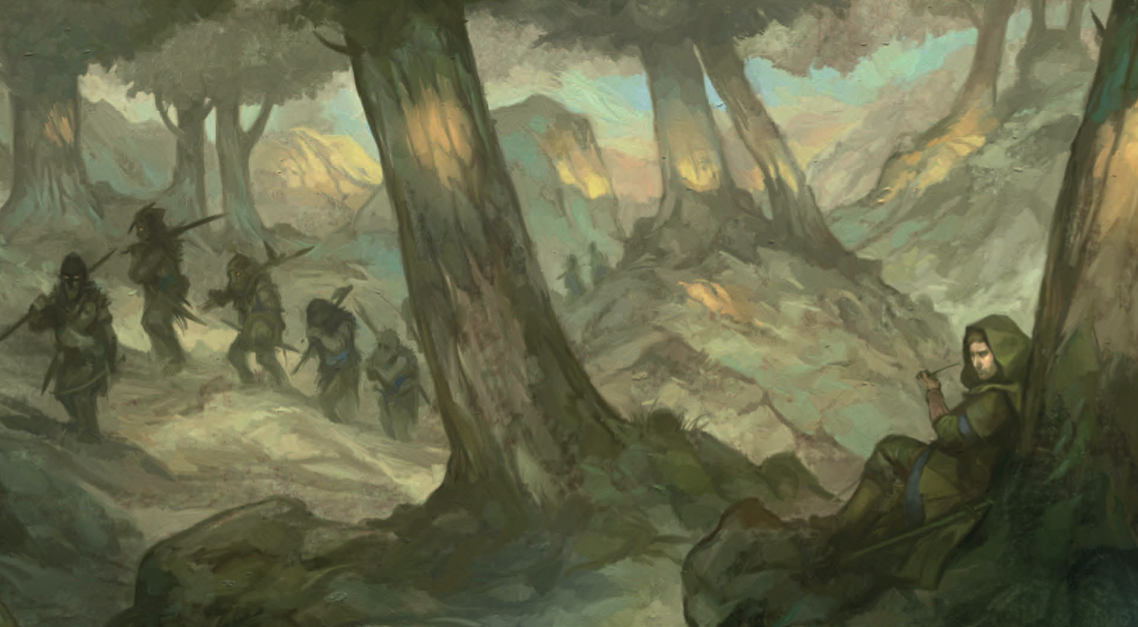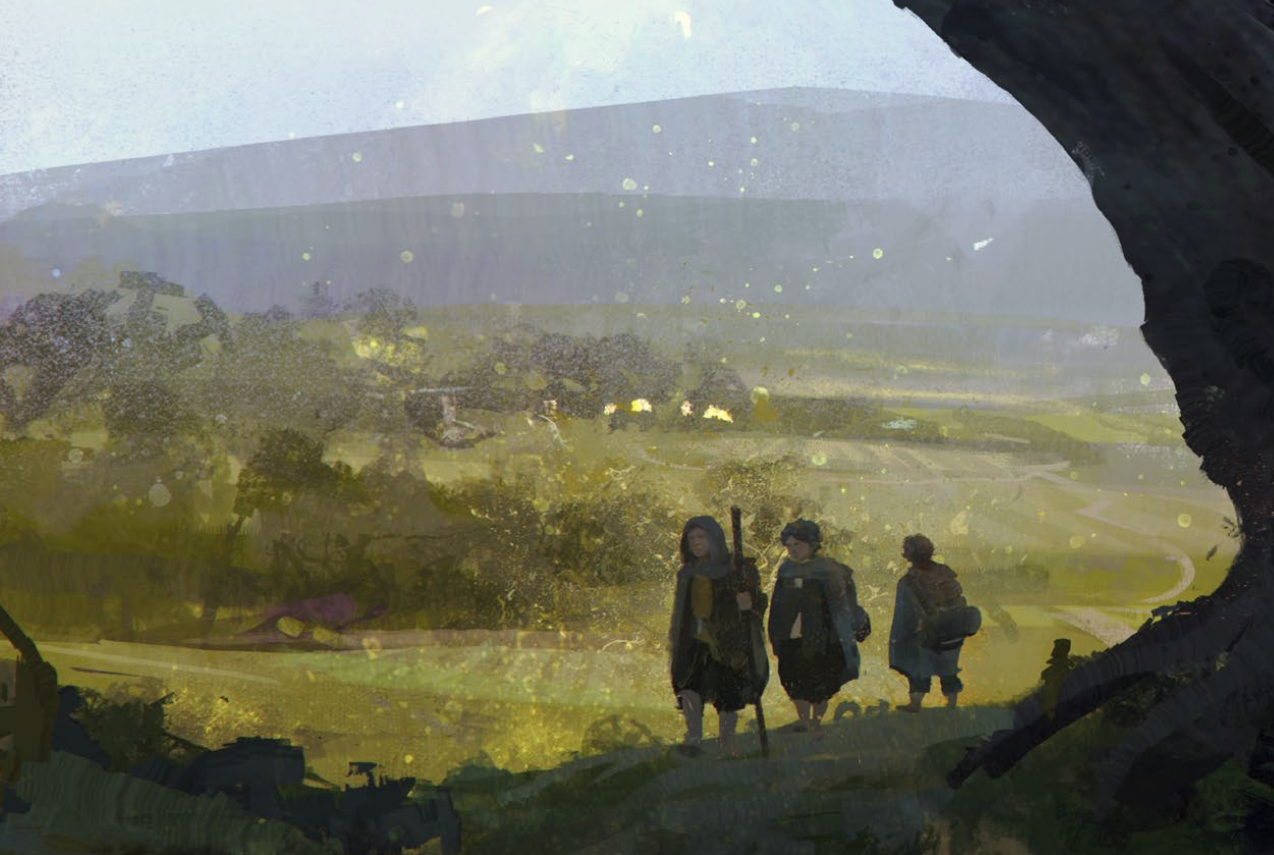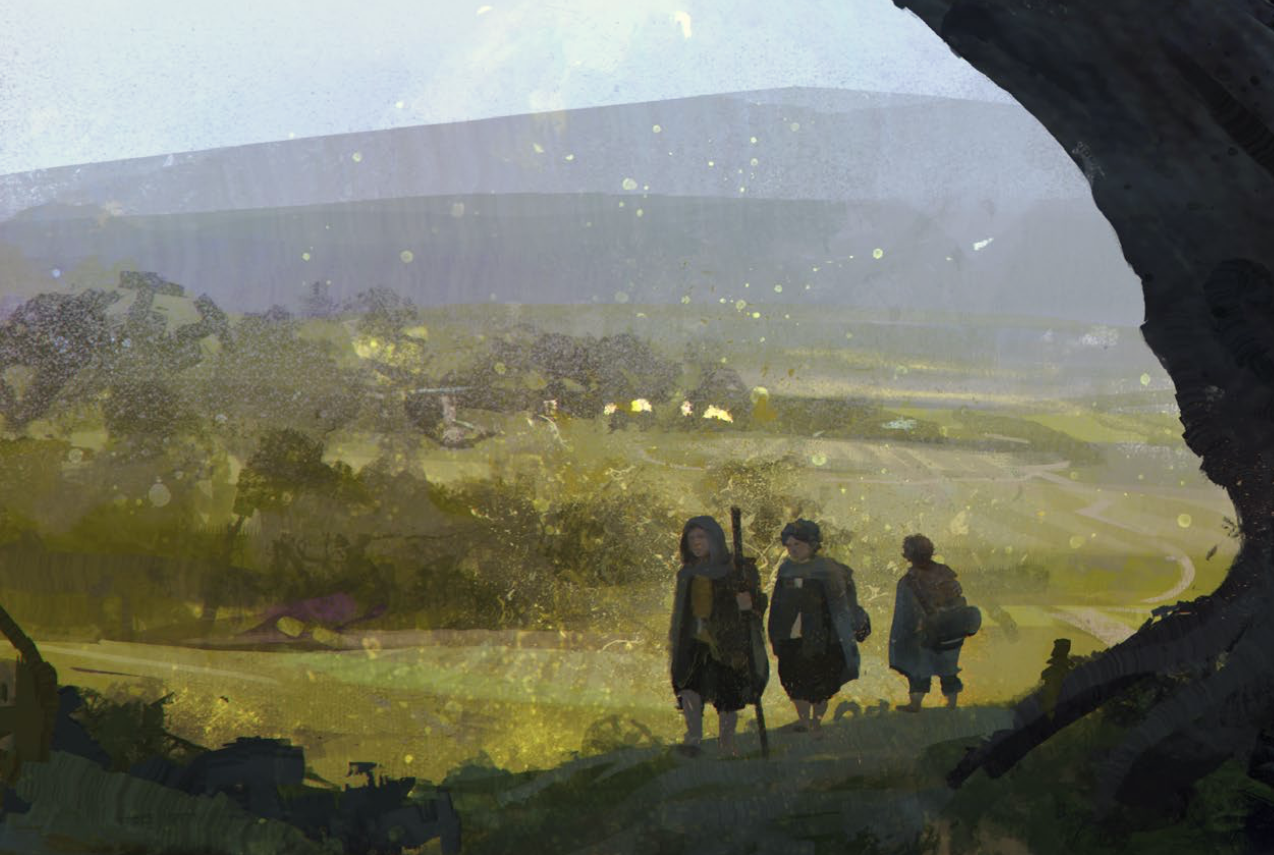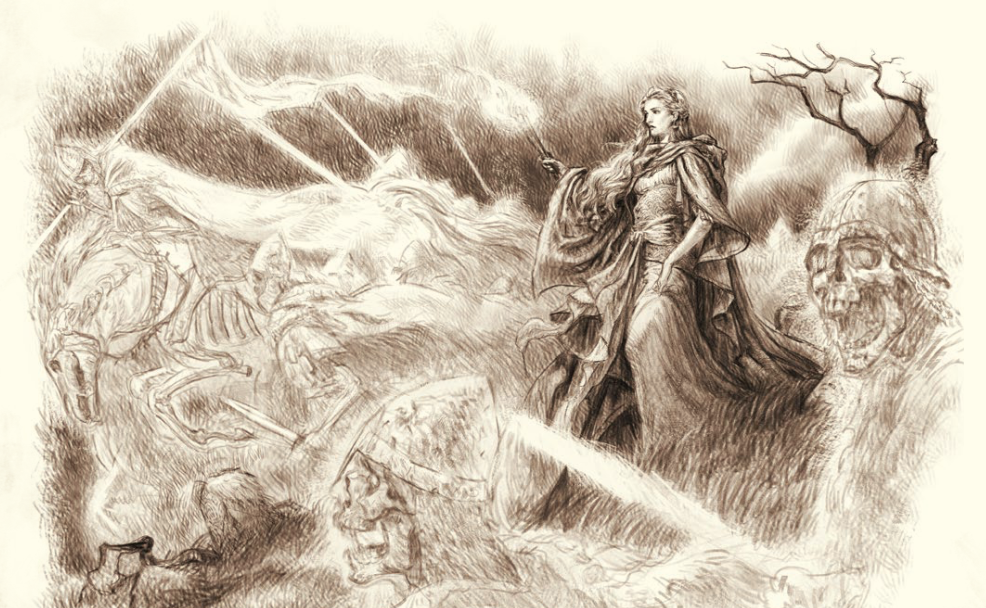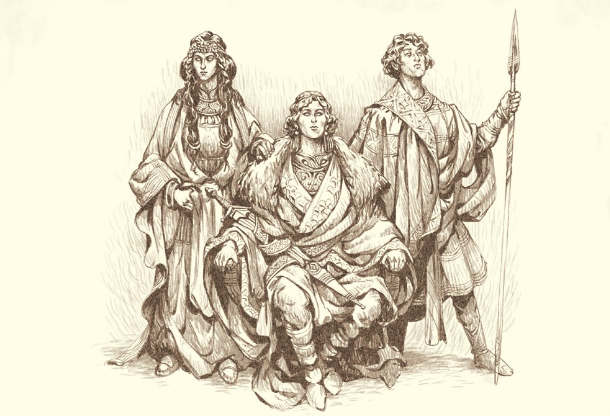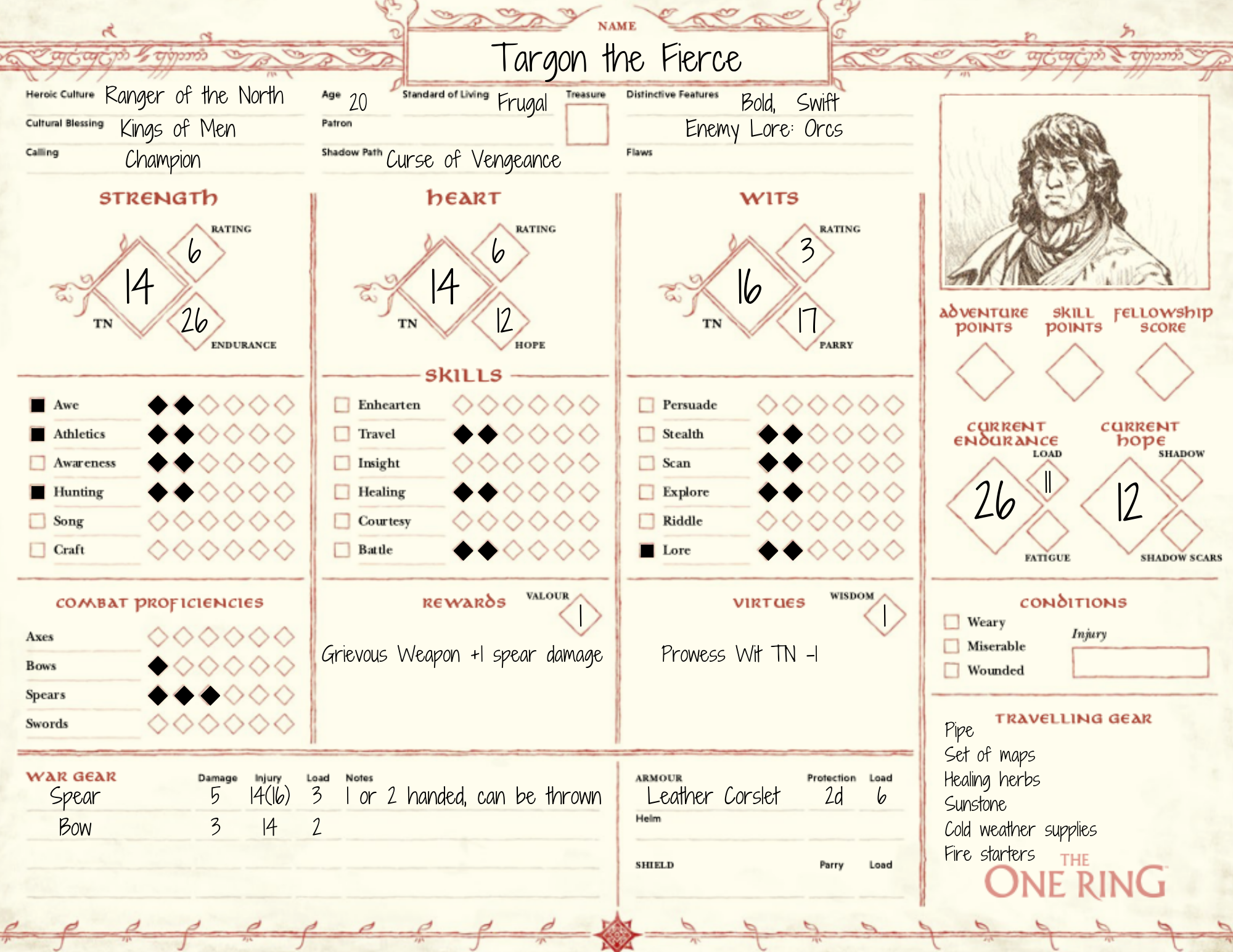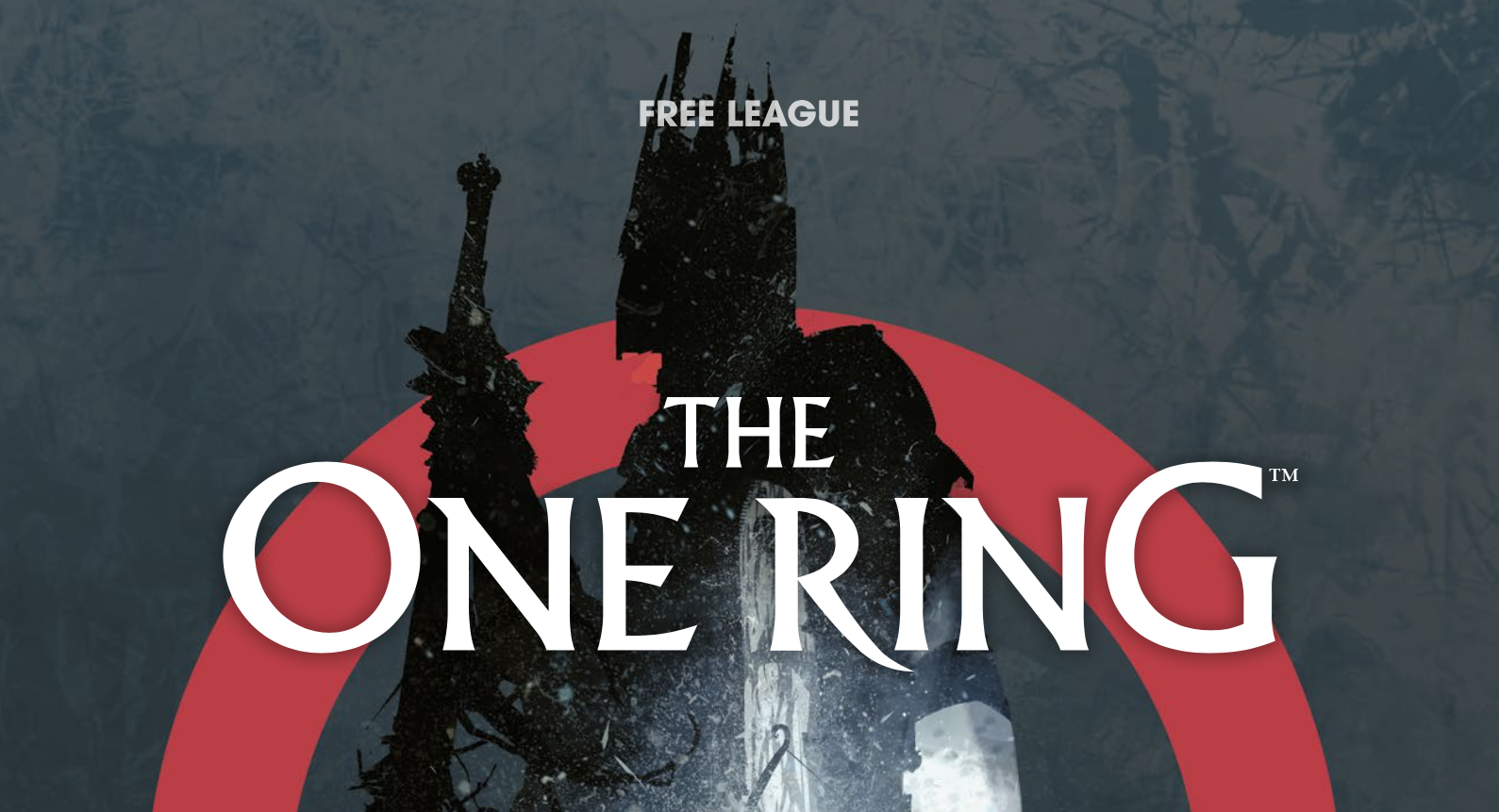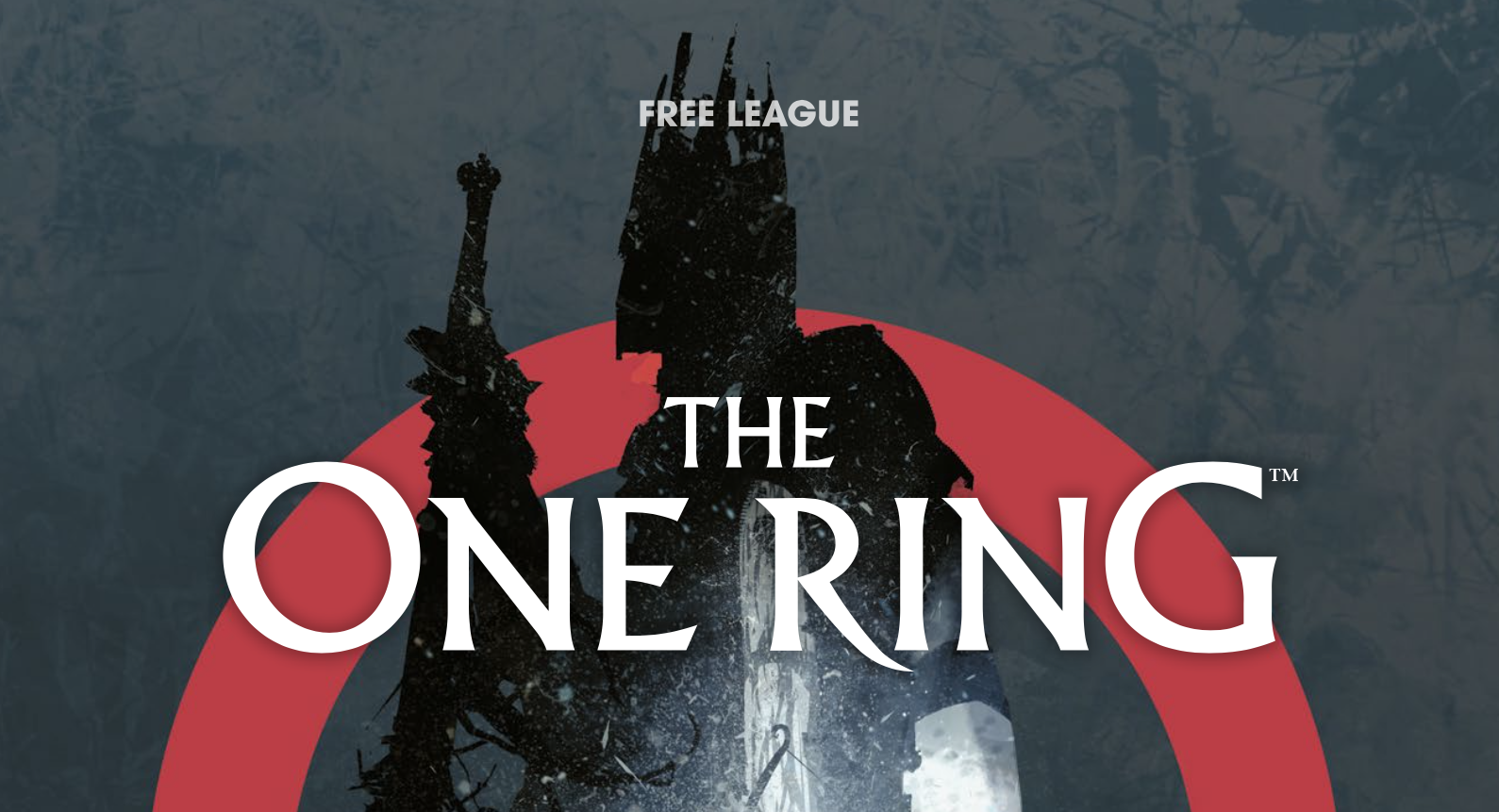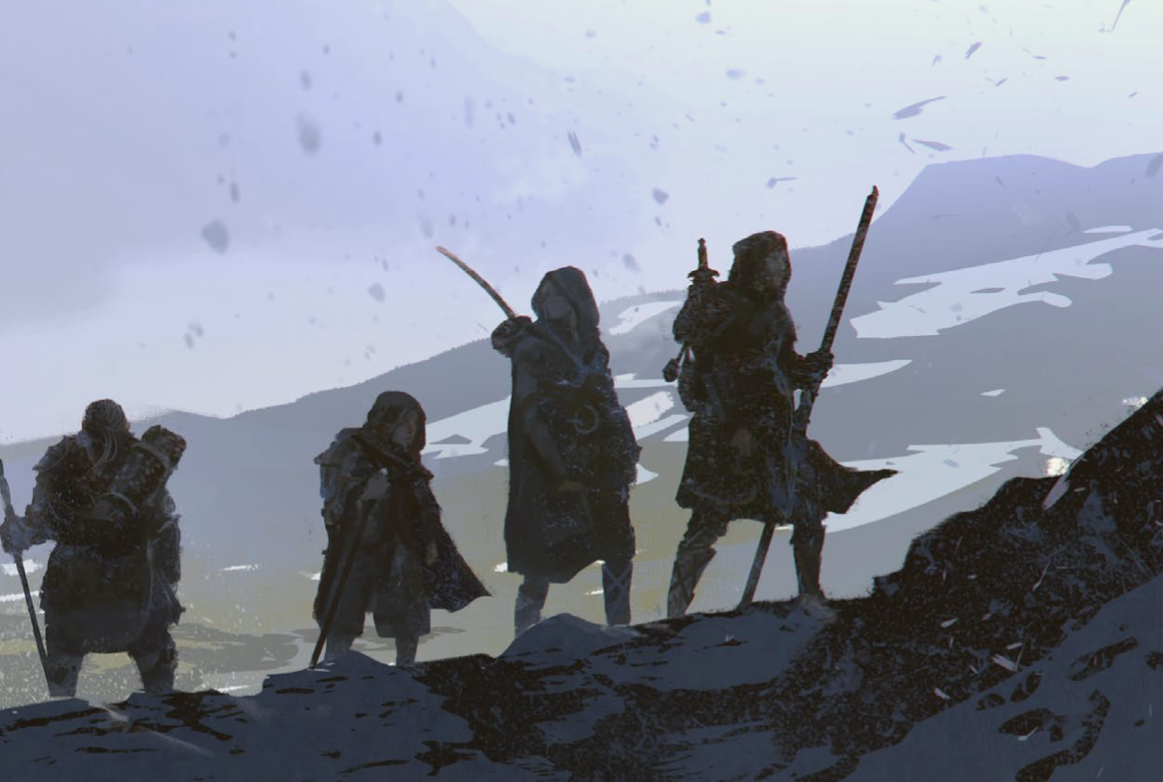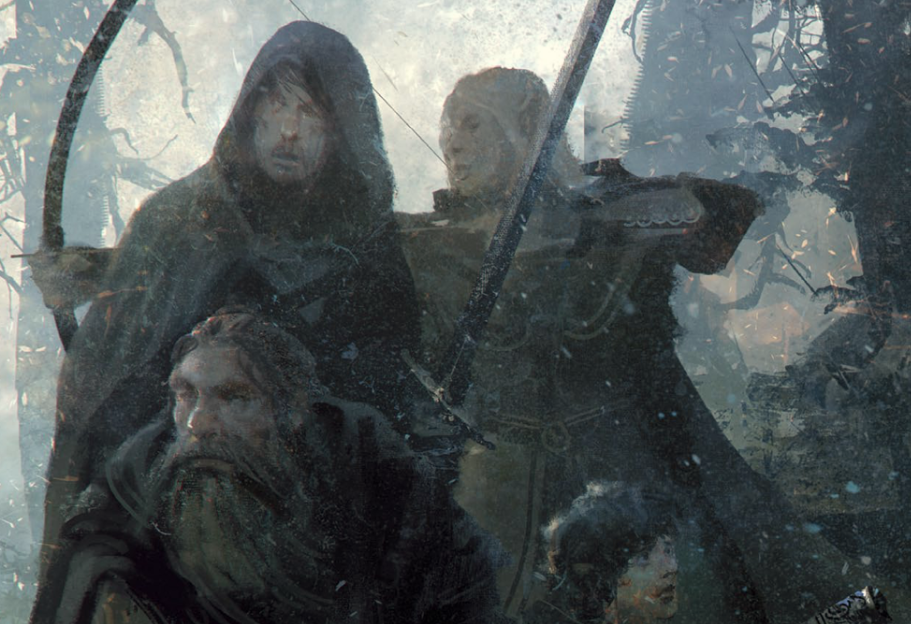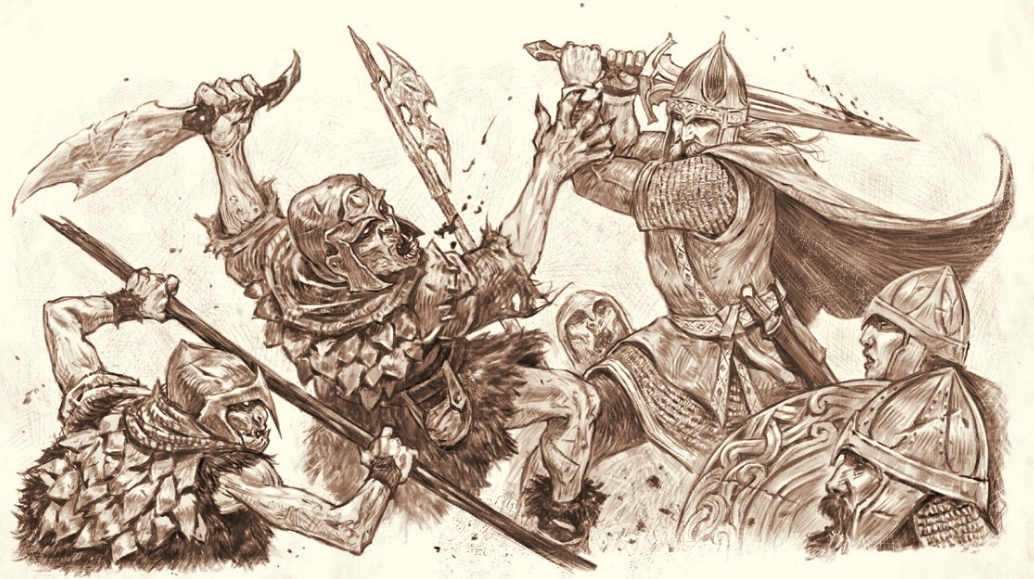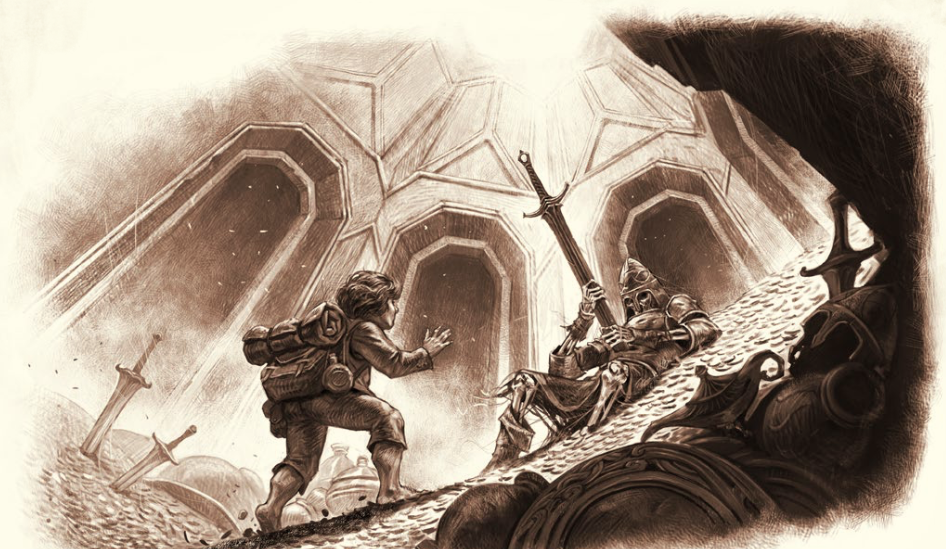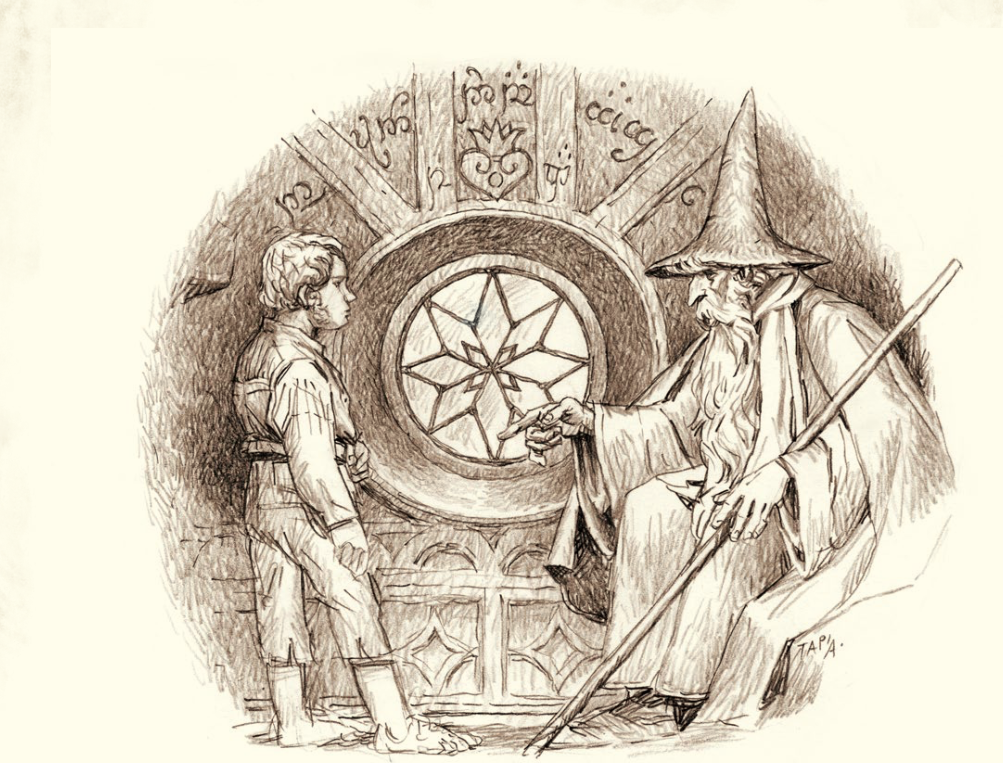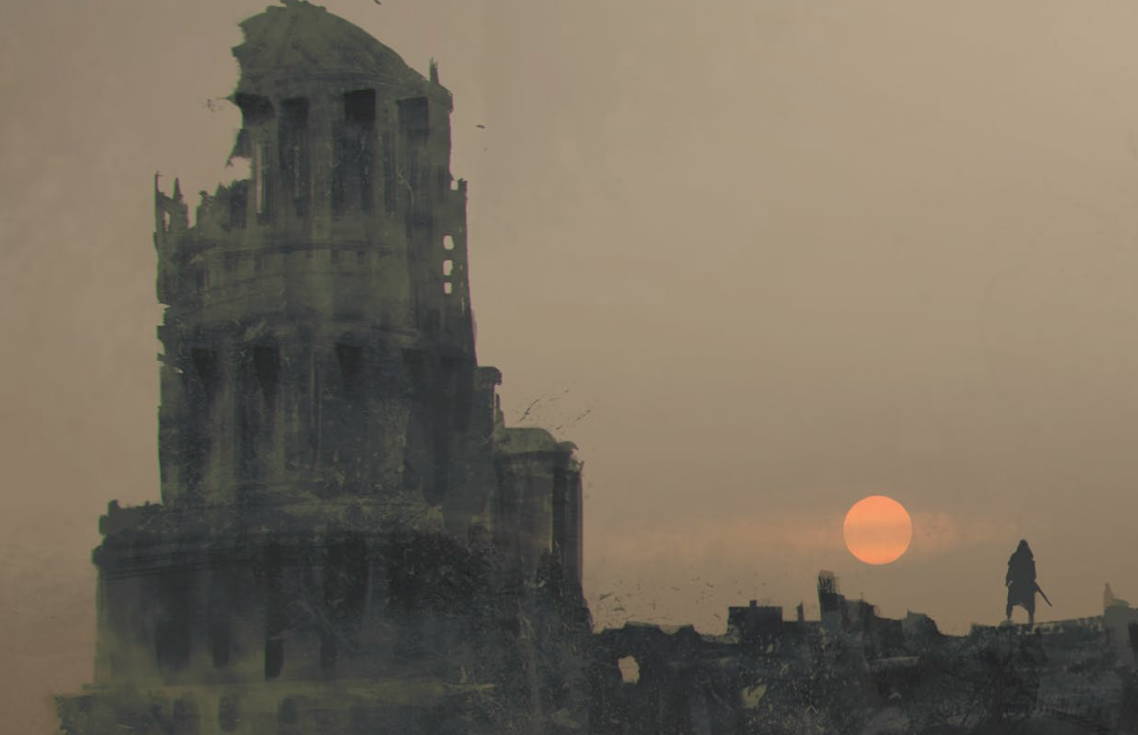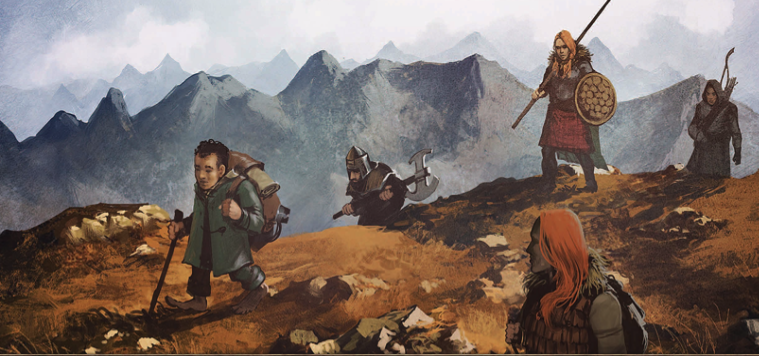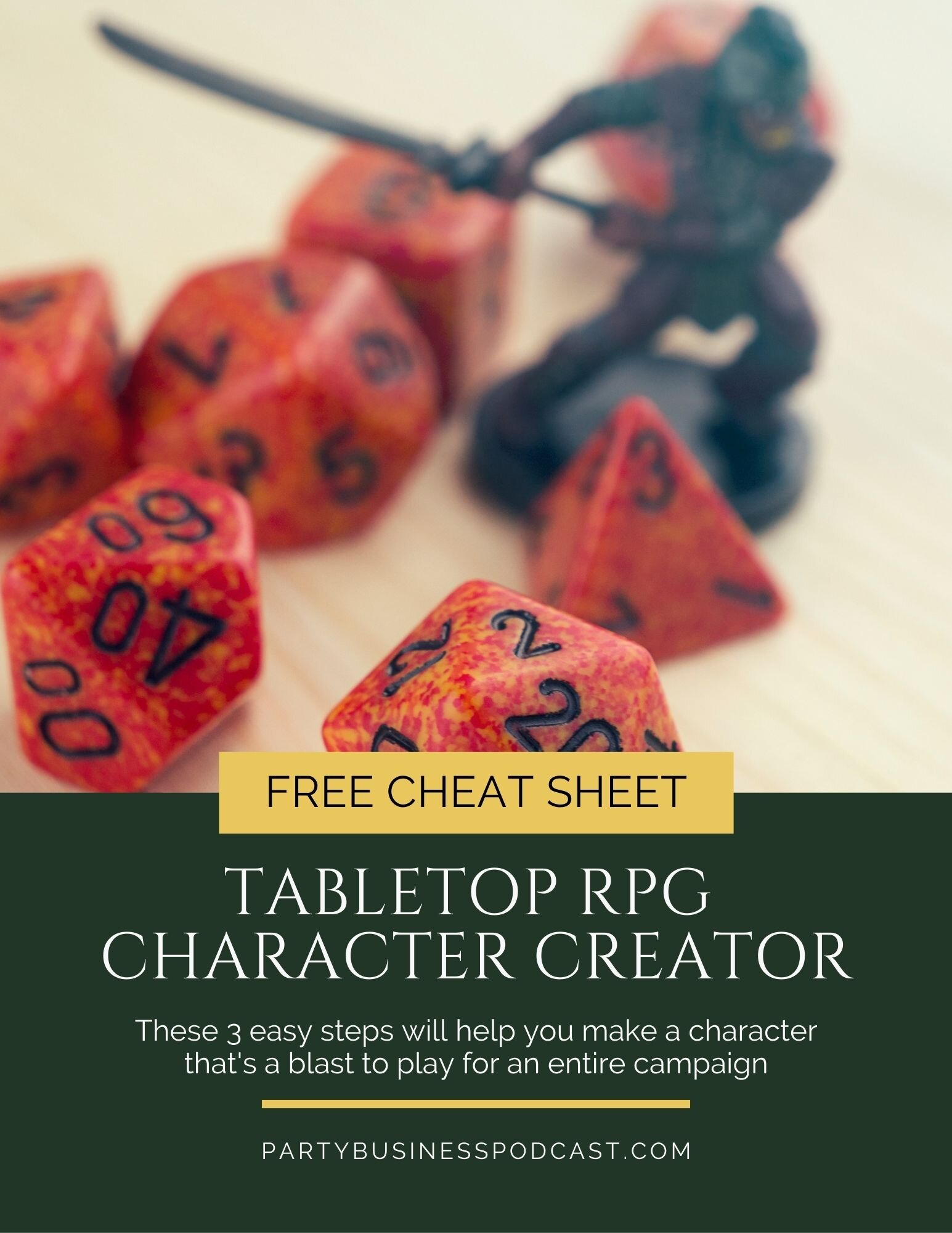Playing the Dunedain Rangers of the North: Lord of the Rings Lore
The Dunedain Rangers of the North have a long and bitter history that you should have an inkling of if you play one in The One Ring RPG 2nd edition. Get to know the Ranger of the North culture and spark some ideas for an interesting character.
Credit: Cubicle 7-artist Mauro Alocci
I'm going to take the easiest guess and say that most parties that form in The One Ring RPG 2nd edition will likely include a Dunedain Ranger of the North.
I mean, when I created an article showing how to create a character in the game, even my example was a Ranger.
I get it.
You want to be like Aragorn.
The scowling.
The smoking next to a fire in the Prancing Pony.
The long, perfectly messed up hair.
The didn't-have-time-to-shave beard. (Even though Aragorn probably didn't grow facial hair according to the nerds on Reddit. Because he has Elf blood back somewhere in his family tree–to answer your inevitable question.)
You want that brooding, incredibly kick-ass, but, overall, sexy as hell Ranger of the North.
Who wouldn't?
But there's more to the Rangers in Lord of the Rings lore than looking foul and feeling fair.
So, let's help you make a lore-accurate rendition of a Ranger that helps your character feel more in line with Tolkien's vision and helps you have a lot more fun role-playing them.
How the World Sees Dunedain Rangers of the North
Only a dozen orcs? Finally, a fair fight! Credit: The One Ring Adventurer’s Companion Sourcebook
I'm starting with this point on purpose. One of the most obvious things about the Rangers of the North is how the world around them reacts to their presence.
I would argue it's even more important than getting into the Númenórean blood and lost kingdoms of the North stuff. The day-to-day for a Ranger largely centers around how the people of Bree and the surrounding area view them.
And that's generally with a ton of mistrust.
When you smell like sweat, boar hide, and tobacco, people will look at you with a hint of disgust. And that's just the tip of the iceberg.
As a Ranger, you're a wanderer (whether that's your Calling or not. Yes, I know it's Messenger in The One Ring 2nd edition–let my tiny joke slide, rules lawyer.)
As a wanderer, you aren't a part of the community. That leads to instant distrust. If you were an honest and upstanding individual, why wouldn't you live in town or farm in one of the communities around Bree?
So, the simple logic of people like Barliman Butterbur is that you must be up to no good.
To make matters worse, there are plenty of rumors about Rangers that are both true and far-fetched. At the very least, there's enough to make some rushed conclusions about the kind of person you are as a Ranger.
Ruins and old fortifications, thought to be haunted and unsavory, seem to be frequent stops for Rangers. The only kind of person that would want to risk making camp in such places must be a brigand. Who else would do such a thing?
What the hell are those Rangers up to? That's the question on everyone's mind, and whenever you come into town, you're almost instantly recognized.
First, you're filthy.
Second, you're not recognizable (not being a part of the tight-knit community and all.)
And Third, there's a Dunedain “look” about you.
Dangerous folk wanderin' the wilds.
To add to these rumors, no one even knows your rightful name. Aragorn is known as Strider. (Pretty important for his real name to be a secret, so it works out for him.)
So there's a fun One Ring RPG thing–pick your character's name, but also, what's the name that Bree gave you or something similar?
Aragorn sums up what the Rangers do and how they're perceived when talking to Boromir during the council of Elrond. He responds to Boromir talking about how Gondor does all the work, but Aragorn sees the bigger picture:
“Peace and freedom, do you say? The North would have known them little but for us. Fear would have destroyed them. But when dark things come from the houseless hills, or creep from sunless woods, they fly from us. What roads would any dare to tread, what safety would there be in quiet lands, or in the homes of simple men at night, if the Dunedain were asleep, or were all gone into the grave?
`And yet less thanks have we than you. Travellers scowl at us, and countrymen give us scornful names. “Strider” I am to one fat man who lives within a day’s march of foes that would freeze his heart or lay his little town in ruin, if he were not guarded ceaselessly. Yet we would not have it otherwise. If simple folk are free from care and fear, simple they will be, and we must be secret to keep them so. That has been the task of my kindred, while the years have lengthened and the grass has grown.”
You get a sense of how infuriating this is to Aragorn, but he knows it's the only way to protect the regular people of the North. That burning fury is something to consider making your character too, and can play into your Shadow Flaw.
As a side note, Aragorn seems to be especially frustrated with Barliman Butterbur, who has no love for Aragorn earlier in the books either. The amount of times Aragorn fat shames him is concerning.
Also, how was that meeting when Aragorn came back as King? This vagabond that Butterbur was barely willing to sell ale to now claims to be King? Pfft.
Speaking of bloodlines and lineage.
The Blood of the Dunedain Rangers of the North
Finally my purpose in Middle Earth draws near….the perfect fishin’ hole. Credit: The One Ring RPG Bree Supplement
In that meme-able scene from The Two Towers where Eowyn makes terrible stew, Aragorn claims to be 87. I hope I look that good at 37, let alone 87.
That's because the Rangers of the North have Númenórean blood, especially those with any import like Aragorn. It gives them a longer life than regular Men (pfft, losers), and I've always wondered if that was partly why they were so hated in the North.
“That's the guy my father used to talk about, and he looks the same! And I started balding at 24! But look at his luscious locks! Must be evil!”
If you want to go way back, a Ranger of the North is a distant descendant of the Edain. They were the Men who fought alongside the Elves against Morgoth (essentially Sauron's boss, but you probably already know that.)
So, your very foundation is that of fighting the darkness.
It's party because your ancestors stood against the Shadow that your Ranger of the North is blessed with long life.
A Ranger's ancestry then traces its background to Númenor, which is similar to the Atlantis of Lord of the Rings lore.
Thanks to their great culture and seafaring ability, they were later able to help defeat Sauron in probably spoiler-y things for the Amazon show.
But what's most important here, while you role play your character, is that Númenor was swallowed by the sea.
Why?
Many of the Númenóreans decided that worshiping the Shadow was edgy and cool. Probably exactly how Tolkien described it, actually.
Those who resisted made their way from the destruction with Elendil, an ancestor of Aragorn and father of Isildur–you know, Isildur who kept the Ring and kinda screwed everyone over.
The point is, your Ranger has the noble blood of those Men who raised middle fingers to Sauron and established the kingdoms of Arnor and Gondor in Middle Earth.
There's a ton of history there, and as we see in The Lord of the Rings books and movies, Gondor is still around during the Ring saga.
It's the lost Kingdom of Arnor that is probably closest to a Ranger's heart. But, more on that in a sec.
What you need to be thinking of is that split nature of your Númenórean blood. It’s capable of so much good, but also holds many failures. Your stand against the Shadow is built into you, but you aren't above its corruption.
Makes for a pretty damn interesting character. Like all real human beings, you have flaws, perhaps big ones, like fat-shaming poor, simple Barliman Butterbur.
(I mean, Butterbur is a hell of a name to live up to.)
And your Ranger of the North has many great names to live up to as well.
One of the Cultural Virtues for Rangers in The One Ring 2nd edition is the ability to make a wondrous item or famous weapon passed down for generations to your character. Númenor, the realms of Arnor, the many wars against Morgoth and Sauron, all are ripe for some special item from your family.
Your Dunedain Ranger lives in an interesting wedge of time. They are right in the middle of kingdoms lost and desperate hope for a new future.
Dunedain Rangers of the North and What Has Been and Could Be
Is it a good idea to stare directly into the sun? Meh, I’m sure it’s fine. Credit: The One Ring RPG 2nd Edition Rulebook
It would take a history book (or entire show) to explain everything about Númenor, its fall, and everything that came after, so I don't want to go too crazy for this article.
If you didn't know, Lord of the Rings lore is kinda vast.
But your Ranger of the North character would sure have history on their mind.
Arnor, as mentioned earlier, is closest and dearest to the Rangers wandering the wilds. They all have ancestral lands that lay in ruin, scattered about the landscape. There's some real emo potential here as your Ranger may get Big Sad looking at what was lost.
And because this is your once-great ancestral home, you still protect it. What fuels all that secret guardian stuff we looked at earlier is your connection to the lands that once were.
Arnor in the North was categorized into three kingdoms.
Arthedain, Cardolan, and Rhudaur formed the three regions in Arnor where a Ranger's people made their lives. And there were some great cities and incredible landmarks. We even see some in the books and movies, like Weathertop.
Amazing map of the three kingdoms of Arnor from Master of Lore.
Bree itself was a trading center located at an important juncture in the road. Those living in its walls don't even realize much of its connection to what once was. And here you are, a direct descendant of those noble people, scorned in an inn by people who know nothing.
Now you can see a little more about why Aragorn had a chip on his shoulder.
There were a lot of factors that brought about the fall of Arnor, much like the fall of Rome.
There were terrible, cold winters, famines, great plagues, but the topping on this terrible cake was the Witch King of Angmar.
From the lands of Angmar, the greatest of the Ringwraiths waged war against the Men of the North after the fall of Sauron and the chopping of his fingers.
Things were already not looking great. Arnor became its own thing after Isildur's death, where he promptly loses the most important item in Middle Earth. (At this time, anyway–don't come attacking me with “what about the Silmarils?” please!
The North was dwindling, and the Witch King cleaned up the rest. He takes the great fortification at Fornost north of Bree, and it takes everything the remnants of Arnor have to get rid of him. This is where the famous prediction that the Witch King will be killed by “no man.” ™ ™ ™
The forces of evil are defeated, but the last of Arnor goes with it.
The Rangers of the North form out of this desolation.
Now, the Rangers guard what's left of this kingdom and hope that one of their Chieftains is made King again.
Enter Return of the King. Spoilers. I mean, right there in the title and everything!
That tension is on your Ranger's mind, at least a little. I mean, it would be for me! Here you are, an awesome version of Men, and you have to just...wait. And hope.
Hmm, there's a character idea.
Character Build Ideas for the Rangers of the North Culture
Damn look at that rock! You don’t need a sword, just start punching orcs! Credit: The One Ring RPG 2nd Edition Rulebook
Let's get into some One Ring RPG 2nd Edition mechanics. Or at least ideas.
Knowing all this good lore stuff and how the world sees a Ranger of the North, let's get some inklings of character concepts going. These are just ideas; I hope they help your creative gears start turning.
1. The Impatient Ranger
I love the idea of a young Ranger that wants to start taking more action against the ever-growing darkness around Bree.
The Rangers of the North must be sensing a change in the in-between time of The Hobbit and The Lord of the Rings. There are decades of growing Shadow, from Barrow-wight restlessness, to walking trees, to orcs and trolls coming out of the mountains and the North.
Then the Rangers double their guard of the Shire. (That's a little later, but still.) Sus.
And most of that time, Aragorn isn't around. He spends DECADES of his life in Rohan and Gondor to the south fighting orcs and being awesome.
Which is great for him, but what about a young Dunedain Ranger who's told their Chieftain is somewhere else and they need to be patient?
Seems like some good tension to me!
A higher Strength and Heart score makes sense here. You haven't developed the patience of your peers or the insight of older Rangers. Your body is ready for battle, and you haven't seen so much darkness yet that you have the same weight as others of your kin.
And I'd invest in Valour first and Wisdom later. Any Cultural Virtues you do get would should relate to fighting and hunting the Shadow, like Strength of Will and Ways of the Wild.
In terms of Callings, Champion and Warden stand out the most here. I especially like Champion since their Shadow Flaw leans into that vengeful fall from grace.
2. The Scholarly Ranger
Not all Rangers are Aragorn rip-offs.
But even with Aragorn, there's an educated, Man of the 4th Age, quality about him. He sings. He cries. He's a World War 2 buff. So to speak.
Lean into that side of being a Ranger of the North.
Sure, you have your strength still, better than most other Men, but compared to most Rangers, you'd rather read ancient texts than fight off wolf packs.
In fact, protecting these uneducated, simple Middle Men is a little frustrating.
This mentality can clash with your mission to protect, and probably sees some clash with other Rangers for that reason.
Or you could try to give these farmers some learnin' that’ll be good for them. Which also reveals more than most Rangers give away about who they are.
This path can be dangerous because your solution to defeating evil might mean revealing secrets that should have been left unknown. The ruins of Arnor hide many things, many of which are not exactly great.
Get a Wit score deserving of your studies and move your Wisdom up as you level early on. This gives you access to some pretty great Cultural Virtues early. Take the Heir of Arnor and give yourself and sweet item or weapon.
And get creative. Maybe that item wasn't passed down to you but was in a secret location you discovered, you legendary book-worm, you!
Scholar is the obvious choice for a calling, but Messenger is also good.
3. The Tomb Defender
Some say the best defense is actually a good offense. Tomb robbers can't rob tombs if they've already been cleared out.
You need to collect as much as possible from the ancient ruins scattered around the landscape to ensure your culture is preserved.
There are more than a few bands of thieves and murderers that wouldn't mind getting their hands on some ancient gold, jewels, or perhaps, something more precious.
It's up to you to make sure they don't get anything too important to your Númenórean blood.
But that means defiling the graves of those who were lost to Shadow. Not only is that plain rude, it's also very dangerous. And frowned upon by Ranger and Bree-lander alike.
You have some sneaky Wit about you, but being around so much darkness probably hinders your hopefulness.
Heir of Arnor is another great Virtue to take early, or even Royalty Revealed as you use your ancestry to inspire those around you.
Treasure Hunter is the obvious choice here, but I love the reverse nature of the motivation. You're treasure hunting to keep treasure hunters away from treasure. Phew!
Making a Fun TTRPG Character
What's important is you make a character that's a blast to play.
Sure, you can memorize the entirety of Númenórean history and all that went into the complicated fall of Arnor...
Or you can grab our handy Character Creation Cheat Sheet that makes it super simple to create a character in any TTRPG format.
It keeps things simple but immerses you in the pillars of your character so you can have fun playing them no matter how long the campaign goes.
Get your free PDF right here, or click below; just tell us where to send it.
Character Creation in The One Ring RPG 2nd Edition: A Step-by-Step Guide
A step-by-step guide to character creation in The One Ring RPG 2nd edition. We will walk you through creating a Ranger of the North as an example, showcasing what makes character creation in The One Ring RPG 2nd edition so great.
Credit: The One Ring RPG by Free League Publishing
Half the fun of a tabletop RPG is getting to create a character.
It's pure creation. No video game, no matter how in-depth the RPG it might be, even comes close to the sheer possibilities of most tabletop roleplaying games.
And getting to make a character that's added to the inhabitants of Middle Earth with The One Ring RPG? Oh, yes please!
But, if you're used to playing Dungeons and Dragons or Pathfinder, you might find the character creation to be different enough to throw you for a loop. Or maybe that was just me–it's not a hard thing to do.
We want to make sure you set up your character with confidence and have a blast playing your next campaign. Hence, this guide takes you step-by-step through character creation in The One Ring RPG 2nd edition.
The 2nd edition of The One Ring RPG brings about a few changes to character creation. (You can see our in-depth impressions of The One Ring RPG 2nd edition rule changes right here.)
The good news is this will be helpful even if you're playing 1st edition. The steps are very similar, but some of the stats work with each other differently. We will try to designate any step in the process that's unique or changed in the 2nd edition of The One Ring RPG.
Let's get started by making a character just for this article.
Here's the loose order of operations when it comes to character creation in The One Ring RPG 2nd edition (and a handy table of contents):
Step 1 of Character Creation: Choose a Heroic Culture
Whatever she is, that’s the Heroic Culture I choose! Or fear. Either one. Credit: The One Ring RPG 2nd Edition Rulebook
Heroic Cultures in The One Ring RPG are essentially your Race from other tabletop RPGs like D&D. Since most cultures in Middle Earth are some form of The Race of Men, they had to break down the races into smaller groups. It makes a lot of sense to do it like this in The Lord of the Rings world.
2nd edition gives you some new options from the core rulebook of 1st edition. Some of these are added in 1st edition later but here are your options from the 2nd edition of The One Ring RPG:
Bardings
Dwarves of Durin's Folk
Elves of Lindon
Hobbits of the Shire
Men of Bree
Now, I'm not going to go in-depth about each one–we would be here all day. Let's make a Ranger, because let's face it, Rangers are badass.
(Even if I get to have just one scene where the character is smoking a pipe with a hood on in the dark corner of a tavern, then it was worth it.)
Culture will determine a ton for your character. For something like D&D, your play will probably be influenced by your Class more than anything. That determines skills, a lot of abilities, and spells. In The One Ring RPG, most everything points back to Culture.
This can be a little jarring if you go in with different expectations (like I did at first.) When I learned how to play the 1st edition of The One Ring RPG and started The Party Business Podcast, I went right to Callings to see what all of the abilities for each one were.
I was surprised to see not much at all. And, it turns out, there are good reasons for that.
A: it seemed that your race, or Culture, is more influential than anything.
B: There pretty much are no true “abilities” at all.
The One Ring RPG is very much set up for roleplay, and the mechanics support that.
So, with roleplay in mind, it makes a lot of sense that Cultures influence how you play your character. Just think of The Lord of the Rings and all the interpersonal banter and jokes between characters based on Race alone.
Hobbits eat a lot.
Elves are graceful and wise.
Dwarves are fantastic smiths and craftsmen.
And Men, above all else, desire power.
(Galadriel throwin' shade in that intro.)
Our Ranger is going to be influenced most by being, well, a Ranger, and a Dunedain specifically.
Rangers are often in the Wild, secretly keeping watch over the regular citizens trying to get a pint at The Prancing Pony.
They aren't trusted by ordinary folk because they seem so gruff, and mystery brings a lot of uncertainty, and uncertainty brings a lot of mistrust.
To make a unique Ranger that isn't a simple Aragorn copy/paste, let's say our Ranger is young (age comes later, but I gotta get some ideas going here.) He's eager to fight the Shadow and tired of all this sneakin' around. He wants to take the fight to the enemy and has some classic youthful boldness that may or may not be misplaced.
In terms of history, our Ranger probably has plenty of experience, even at a younger age, in the Wild and surviving on the go. He's had some martial training, probably more than even most soldiers. And he knows some lore, whether that’s history or the lay of the land currently.
And most importantly, he's probably full of honor and duty and righteousness in some shape or form.
But that gives us a good general idea for motivations (and flaws.)
Step 2 of Character Creation: Record Your Cultural Blessing
They may be leaving Middle Earth, but, damn it, they are going to do it in style. Credit: The One Ring RPG 2nd Edition Shire Book
There isn't much choice here (and maybe that's a shame.) Every Heroic Culture in The One Ring RPG has a Cultural Blessing that makes your character a little more unique.
For Rangers of the North, we will record the Cultural Blessing of Kings of Men. Ooo sounds pretty epic.
Our Ranger has come from a long line of Numenorean heritage. He has lordly blood that gives him long life, and he comes from a different stock than your average Bill Ferny hitting up a pint in Bree.
Our Ranger will get to add 1 point to an Attribute when we set those up in a sec. That’s a nice little bump that will help a lot of skills and Target Numbers (I'll explain those in a bit.)
For the Rangers of the North, there's also another Cultural Blessing. Or I should say curse.
The Rangers are utterly devoted to their cause as Dunedain. They fight the Shadow relentlessly, and their whole purpose revolves around it. That keeps them from putting themselves at ease, even when they’re trying to find a place to rest.
So, our Ranger will recover less Hope points during a restful Fellowship Phase of the game. Which sucks.
Mechanically, this means that Rangers have no chill.
And this helps our roleplay for our young and anxious to get fighting Ranger we're creating. He can't rest until the enemy is taken down.
Side note: Your Heroic Culture will also determine your starting Standard of Living. This determines what you can afford in-game. Make sure to take note and keep track as you find treasures on your adventures.
Step 3 of Character Creation: Determine Your Attributes
Wait…are they playing a roll-playing game about regular people trapped in middle management? Credit: The One Ring RPG 2nd Edition Rulebook
Attributes are the base score that offers a general idea of your character’s skills in The One Ring RPG.
The three attributes are:
Strength–anything your body performs physically, even if that's belting out a banger on Karaoke night, is determined by your Strength. (This was called Body in 1st edition, but I bitch about that in our One Ring 2nd edition changes article.)
Heart–this is the strength of your character's spirit, overall demeanor, and ability to give a damn about other people.
Wits–anything clever, memory-based, or requires your character to be on their toes will probably fall under Wits.
Obviously, the higher your score in a given Attribute, the better.
Attributes play a more prominent role in The One Ring 2nd edition. They influence how hard it is to perform your skills, how much you get to add to Endurance, Hope, and Parry, and can show up as bonuses in other ways too.
There are 6 different layouts of the Attributes for each Heroic Culture to choose or roll for.
I have a feeling our Ranger is all business. He's trained hard and is passionate about defeating the Shadow. This can mean he has a lot of care for innocence but might also be harsh to those who aren't as determined as he is. Passion is a double-edged sword.
Our Ranger is young, without the wisdom of some of the other Rangers that have taken the time to learn about the world around them.
So, here's the Attribute breakdown I'm using for our Ranger:
Strength: 6
Heart: 6
Wits: 2
Again, you get these numbers from a chart from the Heroic Cultures section of the rulebook for the 2nd edition of The One Ring RPG.
And our Cultural Blessing bumps up one of our Attributes.
I'll choose Wits. He's still a Ranger, after all, and probably has a lot more access to lore than a lot of regular folks. He just isn't one to use that part of his abilities instinctually. He acts first and thinks later.
And because he's a Ranger, he's used to keeping his Wits about him in the Wild. He's far from a veteran, but he's growing. Aww, he'll get there, little angry Ranger.
So that brings our Wits to 3 for him.
Now we use those Attributes to focus on the other parts of our character build.
Step 4 of Character Creation: Calculate Your Character's Target Numbers
Look at how great they think they are. Pfft. Elves. Credit: The One Ring RPG 2nd Edition Rivendell Sourcebook
This is the biggest shift from 1st edition that The One Ring 2nd edition makes.
Now all your skill rolls (and combat rolls) are influenced by your Attributes.
Your Target Number (TN) is the number you have to beat to succeed on any roll. The TN for almost everything you do is based on Attributes.
You start with 20, then you subtract from that your Attribute score. That's your TN for each Attribute.
So here's what it looks like for our Ranger:
Strength TN: 20-6=14
Heart TN: 20-6=14
Wits TN: 20-3=17
When we roll any skill associated with Strength, they will need to beat a 14. That’s a pretty standard difficulty. With highly trained skills in that category, or Heart for that matter, it shouldn't be all that hard to hit.
Our Ranger's Wits make things difficult. We have to hit a 17 when we use any of the skills associated with that Attribute.
These attributes are also used in combat.
For instance, your Strength will determine how hard it is to hit an enemy, more or less.
Your TN for Strength plus an enemy's Parry rating is what you have to hit to land a blow in a fight. It's a good combo of your skill, the enemy's skills, and luck. Equipment plays a role too, but we won't go into that here. Let's stay focused on our Ranger.
And speaking of Parry ratings and combat...
Step 5 of Character Creation: Calculate Your Derived Stats (Endurance, Hope, and Parry)
“They can’t be all that haunted right? I’m sure it’s fine.” Credit: The One Ring RPG 2nd Edition Rulebook
Your Heroic Culture in The One Ring RPG will determine your starting point for your Derived Stats: Endurance, Hope, and Parry. These play off your Attributes too.
Endurance is how long you can stay fighting in battle and how much you can carry without getting tired. It's affected, appropriately, by your Strength.
Hope is what you use to inspire yourself and get extra dice to roll with when rolling your skills or fighting enemies. It also determines how long you can go before the Shadow becomes too much of a burden on you.
Parry determines how hard it is for an enemy to hit you.
For our Ranger of the North, our base stats are determined then we will add our Attributes.
Endurance: 20 + Strength (6) = 26
Hope: 6 + Heart (6) = 12
Parry: 14 + Wits (3) = 17
Oof...the Rangers aren't exactly the most lighthearted and hopeful folk. Luckily we offset that a little with our Heart Attribute.
And thankfully, Rangers have a natural affinity for Parry because we don't help that score too much. It's just enough to be a decent TN to hit for an enemy.
Roleplay-wise I think I would push the boundaries on the Hope score too. He dives headfirst into any situation and thinks his strength of will and determination alone can get him through any situation.
With a Hope of 12, he's going to learn real quick to tread more carefully after he has his first bout of madness. (And if you don't remember that from the 1st edition of The One Ring RPG, you can check out more about it in our overview of what changes in 2nd edition.)
Step 6 of Character Creation: Record Your Skill and Combat Proficiencies
Puppy! Credit: The One Ring RPG 2nd Edition Sourcebook
Your skills determine a ton of what you can do in The One Ring RPG.
Sure, you always want to be skillful in at least a few things in D&D, but combat still carries the narrative a lot of the time.
But in The One Ring RPG, roleplay is a crucial part of a character. Your skills can help you avoid combat, find shortcuts, and in general, continually get you out of tight spots. You want to be skillful.
Once again, the baseline is set by your Heroic Culture.
Here's what it looks like for our Ranger:
Credit: The One Ring RPG 2nd Edition Rulebook
The red skills are our Ranger's Favorite skills. When rolling Favorite skills, you roll your Feat Dice (the d12) twice and take the better number.
Then we need to take note of our Combat Proficiencies.
We get to choose swords or spears. I'm going to take spears. The Rangers of the North are well known for their prowess with them, and if you look at the combat stats on them, they are pretty friggin' awesome.
That's our Ranger's main proficiency, which is set at 2. (All these numbers for skills and combat are how many d6s you get to roll in addition to your d12 to try and hit the TN.)
Then we get to choose another proficiency, whatever we want, and get a 1 in that combat skill. I'll select bow for that. (Makes sense, being in the Wild so much.)
Now we have a pretty clear baseline of just what our Ranger will be good at (to begin with.)
In a moment, we will upgrade some of these stats with what's known as Past Experience in The One Ring RPG.
Step 7 of Character Creation: Choose Your Distinctive Features
Every Heroic Culture in The One Ring RPG 2nd edition comes with a smattering of Distinctive Features to choose from.
These set your character apart, and skills associated with those features are easier to accomplish if you use a Hope point. They also can help guide you while roleplaying your character.
From the set the Rangers of the North get, I'm going to choose Bold and Swift.
Our Ranger is young and wants change. He's willing to throw himself in the middle of danger to fight back the Shadow and usually thinks after he's already taken action. Seems a good fit to have those two features guiding him.
Step 8 of Character Creation: Choose a Calling
“I feel called to kick some ass right now!” Credit: The One Ring RPG 2nd Edition Rulebook
Callings work like Classes in The One Ring RPG in some ways. Although, you shouldn't expect a long list of different skills and abilities like you would in D&D.
Again, the Callings really help you focus on roleplaying your character more than anything. Over and over, roleplaying is tied into the mechanics of the game.
Don't worry, though–you also get some bonuses.
Here's the list of Callings to choose from in The One Ring RPG 2nd edition:
Captain
Champion
Messenger
Scholar
Treasure Hunter
Warden
I was between a few for our Ranger.
Captain seemed like it could be a good fit, but probably for a more experienced Dunedain.
Warden also seems like a perfect fit, and most Rangers would probably fall under this Calling. They seek out the Shadow in the Wilds and protect the innocent whenever they can. But there's a hint of intellect built into Warden, and our Ranger hasn’t quite got there yet.
Our Ranger doesn't despair over the Shadow, he's infuriated by it.
Champion seems a better fit. If there's one way to fight off the Shadow, in the mind of our Ranger, it's to stab it as many times as needed with his spear. Our Ranger is action-oriented, so it’s a fight he seeks with Orcs and fouler things.
We get two more favored skills to choose from from a smaller list. To avoid doubling up, I'm going with Athletics and Awe. Both make sense. He's well trained and ready to fight any time. His youth gives him even more strength to pull from.
We get another Distinctive Feature specific to our Calling: Enemy-Lore.
And we have to choose a specific type of enemy, so I'm going with Orcs. He's an Orc hunter, no doubt.
This trait lets us know all the strengths and weaknesses of any Orc-kind we might come across. If Saruman ever asks our Ranger, “Do you know how the Orcs came into being?” our Ranger 100% has the answer ready.
Callings also determine your Shadow Path. The more Shadow points you gain, the more bouts of madness you have, the farther down your specific Shadow Path you go.
For Champions, that’s the Curse of Vengeance.
The Shadow can create more and more violence in our character. When thwarted or our honor is besmirched, it might come to blows the more corrupted our Ranger gets. Acting first and thinking later might be a big mistake someday.
Step 9 of Character Creation: Add Your Previous Experience
“Is this a bad time to realize I can’t swim?” Credit: The One Ring RPG 2nd Edition Shire Sourcebook
Your character wasn't born yesterday. They have training, experience, and a history that came before the adventure.
They may not have shaped the cultural and political landscape of Middle Earth (yet), but they've grown up into potential heroes. Potential being the key word here.
Our Ranger has a history of some kind. He's probably been cruising around the Bree-land area with other Rangers. Maybe he hasn't been given his own quest yet and has always helped more experienced Rangers do what they think is important.
Maybe he is branching out for the first time on his own, or at least on his own from other Dunedain.
Damn, I just remembered I'm not making this character for an actual campaign. Maybe I'll just store him for later because I really want to play him!
Anyway, every character is given 10 points to spend on skill points and combat proficiencies. There's a chart to follow to gain levels in those categories. Basically, the higher level of the skill, the higher the price to upgrade.
Credit: The One Ring RPG 2nd Edition Rulebook
And you have to purchase every level before moving on to the next. So if you want to take a skill from 1 pip to 3, you have to use 2 points to bring it to 2 pips, then 3 more pips to level it up again.
Now, for our Ranger, we need to keep him consistent. He thinks fighting back the Shadow is all about killing it with a sharp object. So we are going to take his spear skill from 2 to 3. (Also, notice how you can only get a weapon up to 3 at this point. Makes sense since you are at the start of your career.)
So that burns 6 of our points. Not super happy about that, but our pointy stick is going to be super effective.
Then let's get two skills from 1 to 2. Rangers are utilitarian and must learn how to go it alone for long periods of time. It would make sense that he’s kind of a jack of all trades. He may not be masterful in anything yet, but he has some decent skill in many things.
And since we only have a 1 in two different skills, it makes it an easy choice.
Plus, Scan is only 1? As a Ranger? Gotta make that 2, or else we are going to be made a laughing stock.
And Awe is a favorite skill. It makes a lot of sense that it be 2, plus we will probably be using it often, so let's try to be as successful with that as possible.
So now our previous experience is set.
Step 10 of Character Creation: Choose Your Starting Gear
Adventuring in Middle Earth? You must have a friggin’ cool backpack. Credit: The One Ring RPG Rulebook
This is where the balance starts.
In The One Ring RPG, you have a Load rating that adds up from your weapons, armor, and treasure you're carrying around. It adds to your fatigue, and you don't want your fatigue to outmatch your Endurance score. And really, you don't want it to come even close. As enemies hit you, you want room before you hit your fatigue score as your Endurance is chipped away.
So we'll pick from our starting options, keeping in mind how heavy everything is.
We are going to have a spear, (duh.) It does 4 damage when it hits and has an injury rating of 14. (That means an enemy has to roll for their armor rating and beat that when getting a piercing blow to avoid becoming wounded. The higher, the better.)
And a spear is versatile. It can be used in two hands instead of just one making the injury rating a 16 instead. And it can be thrown! (Plus, looking at some of the combat special actions, there's some cool stuff for the spear.)
The load is 3, so we will keep that in mind.
We will also need a bow–we are a survivalist, after all.
The bow has a load of 2, does 3 damage, and also has an injury of 14.
And let's add a dagger. Why not? At the very least, our Ranger would have a hunting knife, and since daggers add no Load, there’s no harm in having it on us. It only does 2 damage but has an injury of 14, and it may just be the thing that saves our life one day.
Now, on to armor.
We want to have some protection when the inevitable piercing blow comes for us. When that happens, you roll your d12 plus however many d6s your armor says to roll to try and beat the enemy's injury rating. So, the more d6s, the better.
We want to keep things light, and for roleplaying purposes, probably won't have our Ranger in a full coat of mail. (Plus, he probably can't afford one at first anyway. Some armor has Standard of Living restrictions, so be sure to check that.)
Our Ranger will have a Leather Corslet that gives us 2d6s to roll when we have a piercing blow come our way. It has a 6 load, so that’s not too terrible. (Travel gear doesn't affect your fatigue as it did in the 1st edition of The One Ring RPG.)
Total that's a load of 11. That will set against our Endurance of 26, giving us some room to work with if we get in a fight. Which we will.
There are ways to carry more and increase your Endurance as you grow your character, but that's where things start for us.
Step 11 of Character Creation: Choose Your Starting Reward and Virtue
Kramer-dalf. Credit: The One Ring RPG 2nd Edition Rulebook
Every character has a certain power and renown as they adventure in Middle Earth. These are represented in the Valour and Wisdom ratings.
Not only do they help you fight the Shadow and roll however many d6s as your level in those categories, they give you Rewards and Virtues.
Rewards offer better gear represented as a hero being given something for their brave deeds.
Virtues are those things that come from growing a little wiser and more experienced out in the world.
Then there are Cultural Virtues of special abilities that are specific to each of the Heroic Cultures. It’s fun looking at some of the things our Ranger will be able to do, but Cultural Virtues only come when you level up Wisdom to 2.
All heroes start with a 1 in both Valour and Wisdom. This is unlike The One Ring RPG 1st edition, where each player chose which one they wanted to start with 2. Then they got a Reward or Virtue.
Now, the player character gets to choose a Virtue and Reward to start with.
So, our reward is going to be a Grievous Weapon. That makes a weapon of our choice do 1 more damage than usual, thanks to its strong make. So this will be our spear, and maybe that makes our spear something special. Perhaps it was passed down by our Ranger's father. There’s some story that can get developed there, that’s for sure.
And our Virtue is going to be Prowess. Our adventuring with experienced Rangers has helped our Ranger be a little more aware of his surroundings and sharp-minded out in the Wild. (He has to be a little experienced, being a Ranger and all, and has a keen mind when his youthfulness isn't taking over.)
Prowess allows us to reduce one of our Attribute TN's by 1. So we are going to take our Wit TN of 17 and make it 16. Just a little bit nicer. And it works well with our newfound experience in Scan, which we increased to 2. Hopefully, that makes us a little better at, you know, rangering.
So that does it for the stats–time to wrap it all up.
Step 12 of Character Creation: Choose Your Name, Age, and Story
This is the part that’s all up to the imagination. There's never going to be a character creator in a video game as great as a tabletop RPG because it's really up to you what your character looks like, acts like, is called, and how they came to be who they are.
It's pretty awesome.
And a little intimidating.
We actually have a free character creation guide to make it as simple as possible while still fleshing out an interesting character to play through an entire campaign. More on that later, but you can get it by clicking here.
But for our Ranger, it's time to finally pick a name for the poor bastard. I'm going to just pull one out of the book because this article became waaay longer than I expected. Otherwise, I would probably look up some good Sindarin prefixes and suffixes to mash together and make it all meaningful and everything.
Let's call him Targon. It seems strong, rolls off the tongue easily, and is very Tolkien sounding. And for the ultra nerds out there, it's reminiscent of Turin with that T sound in there. Let's hope Targon's story is less depressing.
For his age, we already said our Ranger is young. Let's put him right at 20. He's old enough now to be seen as an adult, and he certainly feels that way. But he still has a ton of growing up to do.
The curse is he thinks he's all grown up now because he's not a teenager anymore, and oh man, nothing could be further from the truth there.
But he's able-bodied and well trained. If he keeps his wits about him, he can live a very long life with that Numenorean blood coursing through him.
We've already hinted at some backstory through the article, so I won't go crazy here. Besides, you probably want to go make your character now.
Let's be a little cliché about his backstory, though. His spear is his father's, killed, of course, by orcs near Fornost. His mother is a great leader in the ranks of the Rangers of the North and well respected. She's the one trying to get him to not think first with his blade but rather take a step back and examine the situation.
The hard truth is Targon is just like his father, headstrong and willful, which is precisely what got his father killed.
Targon is out to avenge his father, but can there really be vengeance against a tide of darkness?
When thinking of a backstory, you want to think of a big motivation, their deepest fear, and one quirk that makes them unique.
Our character creator goes into great detail, and it can help you make a deep character really quickly.
And here's Targon's character sheet so you can see exactly how all these stats get put into play.
And no I did not draw that little picture, that’s also from The One Ring RPG 2nd Edition Rulebook.
There he is, Targon the Fierce. Or something like that.
I think he's earned a drink at the Prancing Pony in a dark corner along with a good smoke.
A Review of the One Ring RPG 2nd Edition Character Creation
Overall, it's great.
The character creation in the 2nd edition of The One Ring RPG pulls from 1st edition in the best ways.
Ultimately, it feels like more of a streamlined creation with easier-to-follow instructions than before.
I also love how Attributes play a much larger role in everything that you do. Along with favorite skills that feel like they now have a purpose, your character will be finding a specialized role in the group a lot easier.
Leveling up will also be great because the Cultural Virtues are awesome and have some very unique things about them. There are even some cultures that feel a little magical, and magic was entirely left out in 1st edition. (But the magic is extraordinarily subtle and doesn't break the realism or Tolkien lore.)
This isn't to say that the character creation in The One Ring RPG 2nd edition is perfect either.
The big thing missing from 1st edition is the cultural backgrounds. Sure, the attributes have 6 different arrangments to choose from to customize your character a little, but there's no story behind the different layouts.
In 1st edition, they also came with more traits and distinctive features. It’s a shame that’s now missing. I feel like my character has a little less customization because of that.
The doors, I suppose, are open for more flexible backgrounds, but I think that’s a copout. The backgrounds wouldn't have to be extensive–even just something as simple as D&D backgrounds would suffice and make the characters feel a little more customizable.
This is somewhat a consequence of having more skills and rolling in the mechanics instead of just initiating a distinctive trait whenever it made sense. And there are pros and cons to that.
What it lacks is far less than what it offers. The characters you create feel real, and the world The One Ring RPG has made out of Middle Earth feels expansive, dangerous, and exciting all at the same time.
It's the closest thing to creating your own part of the canon, in a way.
And if you want a full breakdown of the changes in The One Ring RPG 2nd edition, you can check that out here.
Creating Characters That Are a Blast to Play
We mentioned it before, but we have a guide that can help you create a fun character that stays fun through an entire campaign.
Often, we make a character with a super detailed background that gets forgotten by the end of the first sessions.
Our guide makes you focus on the cornerstones of who your character is and lets you keep just 3 things in mind as you move through the story. Simplicity leads to complexity.
What's even better is this guide works great no matter the TTRPG you're playing. The One Ring RPG? Obviously, no problem. D&D? Pathfinder? Blades in the Dark? Anything with a little character background is going to work just fine.
So, click here or fill the form out below if you want this free guide to making kick-ass RPG characters.
The One Ring RPG 2nd Edition: First Impressions of the Lord of the Rings Roleplaying Game from Free League Publishing
Take a look inside The One Ring RPG 2nd edition. See what changes from the 1st edition of The One Ring RPG in this in-depth overview of Shadow Points, Journey rules, combat, and so much more. And see what’s brand new for The One Ring RPG 2nd edition.
The Cover of Free League’s 2nd Edition of The One Ring RPG
When something on Kickstarter gets funded in 4 minutes, it must be a good idea.
And a 2nd edition to The One Ring RPG is definitely a good idea.
God knows the fanbase has been waiting and hoping it would happen. And, it has!
But what's going to change in The One Ring RPG 2nd edition?
Let's find out.
I'm one of the backers of Free League Publishing on Kickstarter and got my copy of the alpha version of the core rulebook to this new Lord of the Rings roleplaying adventure. That means I get some of the first peeks inside the shiny 2nd edition.
But I ain't greedy. I want you to be able to see a glimpse at what changes, too, if you weren't a backer or don't want to sift through the entire rulebook.
With some experience running the 1st edition in The Party Business Podcast, some of the changes I noticed reading through the 2nd edition rulebook already have me excited.
But blah blah blah, let’s get to the specifics...
(And it's a doozy of an article, so you can use this table of content below to help guide you.)
Table of Contents
Changes to Journey Mechanics in The One Ring RPG 2nd Edition
“Uhh why is the sun sinking in the East…oh no.” Credit: The One Ring RPG 2nd Edition Rulebook
Let's be honest, this is probably what you were most curious about and the first section I scrolled down to when I got the alpha version of the rules.
It's a lot better now, in my opinion.
You'll see a theme as you read through each of these tweaked rules, and that's streamlining.
One of the issues with the 1st edition of The One Ring RPG is that it had some convoluted mechanics for certain things in an attempt to make them immersive. Sometimes it worked (and when I talk about leveling up skills, you'll see what I mean.) Most of the time, though, it took away from the immersion, ironically.
Journeys in The One Ring RPG were one of those things.
There was a lot of math and hex counting and taking into account what kind of area the group was going through and the time of year and it formed this big formula that’s even longer than this sentence.
Then, fatigue rolls, travel gear weight, and the burden of your weapons and armor added to the mix.
So much to keep track of! Too much.
The new rules simplify it while still keeping the core of what Journeys were supposed to be about. After all, Journeys were really about making Middle Earth feel real, dangerous, and a hell of a lot of fun.
The basics are the same in the 2nd edition of The One Ring RPG.
There are 4 roles the player characters fill:
Guide
Scouts
Hunters
Look Outs
Then the players choose the route they want to take on a map. So you still get to use maps and feel like you're really planning an adventure.
There's even a cool player sheet specifically for Journeys that acts as a travel log. (And I'm a slut for maps, so anytime a game can make that more tactile, I'm going to be a fan of it.)
The example from the rulebook. Credit: Free League Publishing’s 2nd Edition of The One Ring RPG
Then you need to see how many events happen along the way.
That's where the Guide role comes in. The Guide rolls to see how successful the start of their journey is. The better the roll, the farther the group will go before an event happens. This is influenced by the time of year. Winter won’t get you as far as summer if your Guide is falling down on the job.
When an event does take place, that's where the Loremaster comes in. (And remember, Loremaster is the fancy term for Dungeon Master in The One Ring RPG.)
The Loremaster rolls to see which of the party members the event targets. There's an event table to roll on so that you can see what the consequences are for the event.
As it stands right now, there’s not a whole lot of flavor text to help a Loremaster get creative with the events. That might change as the rules get completed, or extra material gets made. (1st edition of The One Ring RPG had extra material for Journeys too.)
And the event table makes for boring play, in my opinion, if it’s used without any imagination. You roll on the feat die (12 sided dice), see what kind of danger will happen, roll to see if you succeed or fail, then move on.
If the Loremaster isn't careful, that could make things lackluster.
I'm always a fan of roleplaying things out. I would even make everyone roll and whoever fails has the challenge happen to them. Then I would tailor that event to the role of the target. If it’s a Scout, for example, then it might be an event based on making camp in a cave that they thought (wrongly) was uninhabited.
I like giving my players as many chances as possible to influence the story.
Once the event is resolved, and the group overcame or failed while gaining some penalties, the Guide rolls again to see how far the group gets before the next event.
Then you keep doing that until you reach your destination. There's no math to consider, no formulas, just a simple roll, and the group keeps moving.
I would love to see this keep getting built upon, but I'm a big fan of the streamlining here. Honestly, so much so that I'm probably going to immediately start implementing it in our One Ring RPG podcast, The Party Business Podcast.
Fatigue still plays its part too. Endurance in The One Ring RPG represents a character's health bar (more or less) and how much they can carry.
Fatigue works against that stat. If Fatigue overcomes Endurance, the player becomes Weary, and you don't want that.
Journeys, naturally, are tiring. As players gain Fatigue through failed or mixed success events, they track their total. At the end of a Journey, the players roll Travel skill tests and see how much they can remove. The better the roll, obviously, the more that gets taken off.
If the players have mounts, they automatically reduce some of that Fatigue.
Whatever Fatigue is left works against a player's Endurance. Every long rest will help recover that slowly.
Overall, Journeys now have a more linear sense to me. You do things mostly with rolls, there's still enough room for roleplay, and the better the players do, the more they help themselves out in the end.
It would be nice to have some specific events gathered up like we had in the 1st edition of The One Ring RPG, but that probably will come with time.
And that just means Loremasters get to write some scenes!
Gaining Shadow Points In The One Ring RPG 2nd Edition
Aaand you all fail your Awareness rolls. Good luck! Credit: The One Ring RPG 2nd Edition Rulebook by Free League Publishing
One of the biggest things that makes The One Ring RPG unique is Shadow Points.
Have enough terrible things happen to your character, and they have a bout of madness. Think Boromir at the end of The Fellowship of the Ring.
If that happens enough, your character is done. Retired. Sailed into the West. Swimming in a pool that’s nice and cool. Whatever form being done adventuring takes.
Shadow Points are still a thing in the 2nd edition of The One Ring RPG, thankfully.
But they get a tweak too.
The biggest change is that the character is in charge of their own bout of madness. In 1st edition, the Loremaster took control of the character and told them what happened. I never like when the GM takes control of a player's character.
That's now fixed, rules as written.
When a character earns enough Shadow Points to match or exceed their Hope stat, they become Miserable, just like in 1st edition. But now the player decides how that bout of madness happens because that's the only way to reduce Shadow Points when it overcomes their Hope score.
The bout has to happen on the adventure because if the player comes back Miserable, they will leave the Company and retire. (Which I don't particularly like, but it's sure an incentive for players to just get it over with.)
There's also a way out before you hit that point of no return with your Shadow Points. You can now harden your will. It clears your Shadow Points but gives you a permanent Shadow Point you can only get rid of at a high price in a Fellowship Phase (more on Fellowship Phases later.)
If you get enough of those, it will be hard to play without constantly overtaking your Hope score, so use that sparingly.
I LOVE that there are options, though.
The bout of madness will have consequences and move you down your character's Shadow Path. You still are forced to retire if you reach your max number of madnesses.
Damn, that sounds like a speed metal band. Max Number of Madnesses!
Shadow Points have different sources that require different rolls to pass the tests (Valor and Wisdom.) Those sources can be Dread, Greed, Misdeeds, and Sorcery. And there are charts for the severity of the terrible thing that happens with increasing levels of Shadow Points players are cursed with.
The more successful the Valor or Wisdom roll is, the more Shadow Points are negated.
Overall, this new way of using Shadow Points makes it easier for the Loremaster to know when players get Shadow and how much they should get. That way, the players can start getting wise and understand how the mechanics of it works so they can strategize around it.
Again, I think I will implement that right away in The Party Business Podcast, where we’re still using 1st edition rules for The One Ring RPG. (We are recording episode 9 next, so those changes won't show up until then if you want to see how some of these mechanics work in action.)
Character Creation Changes in The One Ring RPG 2nd Edition
The group always makes sure they look cool before killing orcs. Credit: Free League Publishing’s One Ring RPG 2nd Edition
Let's face it, character creation is half the fun of any good tabletop RPG. The One Ring RPG is no different.
There are some tweaks to creating your character in 2nd edition, but it's heavily influenced by 1st edition.
You still have, more or less, the same skills to invest in, attributes, cultures, and callings. And you even build your character similarly to 1st edition of The One Ring RPG.
How all of those things work with each other and where they show up in gameplay sees some changes.
Most obviously, there are new cultures and callings in The One Ring 2nd edition because it's set in a different part of Middle Earth than the initial release of 1st edition. You'll be adventuring on the west side of the Misty Mountains, around Bree, Rivendell, and Eriador at large.
So, cultures are different simply based on that. Here's what's available in the alpha version of the rulebook:
Men of Bree
Dwarves of Durin's Folk
Elves of Lindon
Bardings (which surprised me considering how far their home is from Bree)
Hobbits of the Shire
Each has its own unique skill sets, traits, attributes, and all that good stuff.
And the Callings, that act as Classes in The One Ring RPG, also got an update:
Captain
Champion
Messenger
Scholar
Treasure Hunter
Warden
These are primarily based on what we got in 1st edition.
But what struck me as a huge gameplay shift was how Attributes work.
Attributes are general representations of a player's physical and mental prowess combined with how passionate, hopeful, cheerful, or kind they are.
All this is represented by Strength, Heart, and Wits. (Strength was Body in 1st edition.)
Those played a confusing role in the 1st edition of The One Ring RPG.
They added to your skill rolls when you became hopeful. There was a different score based on your favorite skills, and sometimes they played into other things. It was kind of a mess and hard to remember how they played into gameplay for a newbie.
(Side note: favorite skills are better now too. You get to roll with advantage when using favorite skills. Ok, back to Attributes.)
But now Attributes play a more prominent role (roll actually.)
In the 2nd edition of The One Ring RPG, Attributes determine how hard it is for skills associated with that Attribute to pass the Target Number. Target Number being the DC for D&D fans–the number players have to hit for a success.
Whatever your Attribute is, you subtract that number from 20, and now you have your base Target Number (TN) for any of the skills under that Attribute.
So if you have 7 Strength, that means your TN for any of those skills will be 13 (20-7.) So Awe, Athletics, Awareness, Hunting, Song, and Craft all have to hit or beat 13.
Side note: I liked it better when Strength was called Body because it reflects more the total senses, energy, and physicality your body has to perform for those skills. It's not all just “strength,” but I digress.
The Loremaster can still say a TN is harder based on a situation. So if you're trying to impress someone with a song that hates your guts, the TN might be higher, or you might lose a dice to roll with as a disadvantage. But for the most part, the player will always know what they have to beat.
I don't know if I like that as a Loremaster. But, I am very curious to play with it. And I'm happy the Attributes play a bigger part.
They will also determine your base Endurance, Hope, and Parry ratings.
And the Strength attribute is a pretty big deal in combat if you want to hit anything.
Which brings us to...
What Makes Combat Different in The One Ring RPG 2nd Edition?
Me when someone says Harry Potter is better than The Lord of the Rings. Credit: The One Ring RPG 2nd Edition Rulebook by Free League Publishing
Attributes. Or at least they are more involved in combat from the get-go in 2nd edition.
That Strength Target Number is what you need to score a blow against an enemy. If the enemy has a Parry score, that's added to that TN, but otherwise, it’s on the combat prowess of the player to hit.
I like that a lot. It’s a balance of the skill of the user, the Attribute, the skills of the enemy, and luck. In a fight that's happening with only seconds to make decisions, that seems to make a lot of sense to me.
The most important thing about combat is that it still stays super deadly. What I loved right away in The One Ring RPG is that combat can go very bad, very quickly. The threat of death is always there, and that's realistic.
A group in D&D might encounter 7 goblins, and even if they are level 1, they won't be all that worried. They encounter 7 goblins in The One Ring RPG, and it might just go bad no matter how many skill points they invested in their combat skills.
Now, a higher-skilled combatant with great armor and some reward traits added to their weapons will be a lot more confident. But the threat of getting 2 wounds is always there.
(Wounds, remember, are when an enemy gets a Piercing Blow with a good roll and beats your armor score. Wounds have severity levels now in 2nd edition, and there's new rules for how they affect monsters too.)
Get 2 wounds, and your character is down. If that second wound also takes you to zero Endurance, you're dead. Done. Kaput. Finished. Just like that.
It makes even a skilled group wary of running into a dangerous situation and allows for roleplay mechanics to add more strategy to an encounter.
Even in 1st edition, I got to see this play out. In The Party Business Podcast, our group finds themselves trying to free someone from a spider nest. Instead of rushing in knowing that they can take some spiders no prob (like they probably would have done in D&D), they decided to plan and be sneaky.
One character rode the spider web down a wall, another set it on fire, and a third covered their escape while everyone else wheel borrowed the captive out of there, and it made for incredible roleplaying.
The 2nd edition of The One Ring RPG keeps that tension.
You still have the combat stances like 1st edition, which I like. Depending on the stance, those have special things your character can do, so you can start adding some tactics to the fight.
One difference about your attack rolls is that any 6's on the success dice (your d6) grants you a special attack. You can choose to spend a 6 on a heavy blow that does extra damage, or fend off the enemy giving you a parry boost, or add to your piercing blow success, etc. It makes every roll exciting, and I can't wait to try combat like this.
Piercing blows remain, although weapons no longer have edge ratings to hit. Everything is based on hitting a 10 or the Gandalf rune on the Feat Die.
Some legendary weapons and reward traits can improve that score, though.
Did I say legendary weapons?
Wondrous Items In The One Ring RPG 2nd Edition
“I’m sure this sword isn’t haunted at all. Very confident.” Credit: The One Ring RPG 2nd Edition Rulebook by Free League Publishing
My biggest beef (and there are very few) with The One Ring RPG is a criminal lack of kick-ass weapons and items.
Does this make sense in Middle Earth as the players traverse The Lord of the Rings world that Tolkien built?
Absolutely.
Do I still wish they would find that amazing item that turns the tide of the campaign?
Of course.
Well, the 2nd edition of The One Ring RPG makes up for that.
There's an entire section of the rulebook dedicated to making legendary and ancient weapons and items. Whole tables will help you create something that might give stealth advantages, make a character more awe-inspiring, or give them bonuses in battle.
Someone wearing the helm of some ancient Dwarven champion might be able to rally the others around them in combat.
There are charts to help you build characters from different ancient cultures like the Noldor Elves or the Numenoreans.
The book is very clear that there shouldn't be too many of these in a campaign. These items are rare, and when found, are a marvel of the Third Age in Middle Earth. And there's even rules on finding them.
This isn't just for weapons and armor either–you can find trinkets too. Maybe even a ring.
Your Hope score will fuel a lot of the Blessings that are attached to weapons and items. Many of these allow you to have automatic successes that are considered “magical” in some way. There's a catch though, if you show off these powerful abilities in front of others, it might draw unwanted attention.
(Which we will get to here in the next section because that’s a whole new mechanic too.)
The magical success on skills replaces the Distinctive Trait feature from 1st edition of The One Ring RPG in a way. The Traits are still there, but you have to burn a Hope point to use them with associated skills, which still just gives you an extra success dice.
Traits have always been a kind of weird thing in The One Ring RPG because they are a roleplaying mechanic more than an ability. In 1st edition, they meant possibly not having to roll at all to do something, but now it seems they have a little less power–but more definition.
I'm not sure if I'm a fan of that. I would have to play with it to see. I always liked giving my players more roleplaying opportunities and rewarding them for doing it.
But that's neither here nor there. The addition of wondrous items and legendary weapons is badass.
Honestly, it's one of my favorite features, and I'll plop that right into our campaign in The Party Business Podcast.
Drawing the Attiontion of The Eye of Mordor in The One Ring RPG 2nd Edition
“Someone pass the maggoty bread please.” Credit: Free League Publishing’s 2nd Edition of The One Ring RPG
If there's one thing that’s ever-present in The Lord of the Rings books and movies, it's the crushing weight that the Eye of Sauron is constantly hunting for the Fellowship.
And it’s so fun for everyone that Free League Publishing decided to put it into the game mechanics in the 2nd edition of The One Ring RPG!
1st edition still had Shadow, and that acted as a way to get that feeling. But it didn't feel like you were drawing the attention of the Enemy actively.
And frankly, that's probably good. At that time especially, if you were playing a campaign set about five to ten years after the Battle of the Five Armies, Sauron was very much not paying attention to that area. He had a tower to build and Gondorians to piss off.
But the 2nd edition of The One Ring RPG is set a little later. Sauron might be hunting more actively for the Ring and trying to see what any goodie goodies are up to out in the world.
Your group might be the goodie goodies he starts to loathe.
And that's cool.
And terrifying.
The mechanics of the Eye act like Shadow Points for the whole party. You start with a baseline that depends on who's in your group. A party with a couple of Hobbits and a few Breelanders isn't going to attract the attention a Ranger of the North and Elf would.
Every time a party member gains Shadow or uses a Magical Success on a skill or ability, the Eye begins looking more in their direction. There are tables and charts in the rulebook that explain how much attention the party can gain before being hunted.
Yup, hunted.
An event takes place that the group will either need to overcome or escape from, again based on the area they are in and what caused the hunt. There's also some Feat Die to roll.
It adds a level of intensity to Shadow Points too. Sure, your character might pass most of the Shadow Tests, but there are still consequences for you if your fellowship members struggle.
And that's what I love about the mechanic. It makes the players feel even more bonded to each other. Anything that will make the fellowship feel more like, well, a fellowship is probably a good thing.
After all, The One Ring RPG is all about fellowshipping.
Changes to the Fellowhip Phase in the 2nd Edition of The One Ring RPG
“Can someone pass the non-maggoty bread please?” Credit: The One Ring RPG 2nd Edition by Free League Publishing
God, I love me some good downtime in a tabletop RPG.
The Fellowship Phase has always been about the players making choices about what they want to do and how they develop their character.
Originally, in The One Ring RPG, Fellowship Phases had a lot of rules around Sanctuaries and what you could do in and out of a Sanctuary. Now, a ton of that has been simplified.
Fellowship Phases happen after Adventuring Phases as the group traveled and explored and fought the Shadow. Time to enjoy some well-deserved comforts.
The group chooses a location they have been to before. Most of the time, it will be something nearby, except at the end of the year (a Yule Fellowship Phase,) which I'll get to in a sec.
Then they get to do a few things. First, and this is different now in the 2nd edition of The One Ring RPG, they recover Hope. This happens no matter where you are as long as you are in relative safety, which should be every Fellowship Phase.
Hope recovery is based on your Heart Attribute. You won't recover all of it unless you are at the end of the year (there's a reason for that.)
The good news is you don't have to burn a Fellowship Undertaking to get some Hope back. And you get some Shadow Points taken off based on how effective you were in your Adventuring Phase as determined by the Loremaster.
None of that is tied to a Sanctuary or an Undertaking anymore, which is awesome.
Undertakings form a long list of possible things your group can do together and as individuals. From studying maps to help Journey rolls, meeting Patrons, writing songs that can help during adventures, identifying wondrous items, or recovering even more from the Shadow.
At the end of the year (typically, there's an Adventure and Fellowship Phase per season of the year), there's the Yule Fellowship Phase. This is the longest Fellowship Phase that allows the players to visit home and wait out the winter in comfort.
There are specific Undertakings that happen just for the Yule Fellowship Phase.
Every standard Fellowship Phase sees the players do an Undertaking as a group then an Undertaking as an individual that counts as a “free” Undertaking based on their Calling. In the alpha rulebook, this was unclear as to what that meant. Maybe it has to do with the Distinct Feature of the Calling, and it’s up to the Loremaster how to interpret that. But hopefully, there will be more clarification as we see the printed version made. (And if you see something that I missed, please feel free to let me know what it means in the comments.)
A Yule Fellowship allows all the players to do something individually and then get the free Undertaking too. It's supposed to represent going home and getting some much-needed chores and activities done. Plus, like, see family or whatever.
Of course, the group gets to raise their skills, Valor, and Wisdom in a Fellowship Phase too.
This is another big difference from 1st edition that I am not sure I like.
Skills Points now get gained per session of play. Or about 1 point per hour of play during an Adventure Phase. So that means you are probably coming out of an Adventure Phase with 6 to 12 points to spend–ish.
It doesn't matter how well you rolled or what traits you evoked, that’s steady for everyone. You don’t count skill group pips.
I loved how The One Ring RPG did skill upgrades in the 1st edition. How well you rolled and what you tried made you better. It seemed natural. It worked kind of like leveling up in Skyrim for those who played that. (And who hasn't?)
It incentivized the players to roll for anything they could think of. They actively tried to think outside the box, and that mechanic rewarded them.
Granted, that was a bitch to keep track of. I'm bad at remembering giving Inspiration in D&D, let alone making sure players are leveling up throughout the adventure.
It can be overwhelming, so I see why it was simplified. In the end, you could still run the leveling up the same way 1st edition did.
And you still get cool rewards and virtues for Valor and Wisdom.
Encounters Are Now Councils in The One Ring RPG 2nd Edition
“I’m not trying to rob you…you just owe me for second breakfast.” Credit: The 2nd Edition of The One Ring RPG by Free League Publishing
Councils are more specific now than the Encounter counterparts from the 1st edition. And Encounters were interactions with new people the group met to try and add some mechanics to social situations.
This was, based on special meetings in the books. In The Hobbit, Bilbo, Gandalf, and the Dwarves all met Beorn and needed to be very particular about how they did it so they wouldn’t insult and/or piss him off.
That's what this mechanic tries to represent.
Now, Councils are just for super important formal meetings rather than encounters with every new rando on the road. Unless they are Gandalf or something.
It's similar to 1st edition but simplified–which seems to be the theme for all the rules from The One Ring RPG 2nd edition.
Resistance is set for the Council. If it’s some crazy request the group is asking of Elrond, it’s going to be very hard to get him to agree or help.
The group makes introductions, rolling for certain skills like Awe or Riddle, then they move on to the interaction. The person they’re meeting with will also influence the rolls, depending on the group’s standing with them and their personality.
The introduction stage will determine how many rolls the group makes as they interact with this influential person.
Then the group keeps rolling more social skills through the interaction as they see fit.
The whole system is a distilled version of what came before that works a lot more linearly than in the 1st edition.
Once again, I'm a fan of the simplicity while still keeping the mechanic intact that makes The One Ring RPG special.
Final Thoughts on The One Ring RPG 2nd Edition
*John Williams intensifies…wait wrong geeky thing. Credit: The One Ring RPG 2nd Edition Rulebook by Free League Publishing
This is already a huge article, and even still, there's no way to jam all of the changes to The One Ring RPG 2nd edition.
There's much more I missed, but this was just from going through the alpha rulebook from Free League Publishing and writing down my first impressions.
At the end of the day, the 2nd edition leans heavily on the rules of the 1st edition of the game, which is a good thing! The transition for those who love The One Ring RPG already will be an easy one.
What has changed is mainly for the better. I expect that the gameplay will move much quicker, and things won't be nearly as taxing on players (and the Loremaster) to try and remember.
The rules from 1st edition, if we were going to think about things visually, are more...stop and go. Like everything piling up at events, and then there is a radial menu of things to do. Then those things could cause other things that go in all directions around that radius.
In the 2nd edition of The One Ring RPG, it’s more linear (as I said a few times in the article.) And I mean linear in a good way. It's rolling, then based on that roll, roll again, then based off that, do a thing or don't do a thing. Journeys and Combat especially seem to have benefited from the streamlining.
I’m so excited to start getting these changes in the campaign I'm already running with 1st edition rules. The great part is that the new rules transfer so easily that you can start playing with them immediately, even in the 1st edition.
The enemies and their stats and some of the Shadow Point mechanics will have more of a transfer problem, but they aren't that big of a deal. For example, Valor is rolled more in Shadow Tests in 2nd edition, where Wisdom plays a greater part in the 1st edition. Changing that could ruin a player’s build, who invested in Wisdom to avoid Shadow Points.
What we need is a 2nd edition adventure campaign now. There's a mini-adventure in the rulebook that looks like a lot of fun to run. It's creepy, and sorrowful, and very on-brand for The One Ring RPG.
There is a starter adventure set from the Kickstarter that is more lighthearted. The group is a party of Hobbits running around a very detailed and mapped-out Shire.
(We joke about just having fun in the Shire on The Party Business Podcast every time the group encounters something scary. Maybe we will actually be able to do that now!)
And speaking of, if you want to hear these rules in action, listen to The Party Business Podcast.
The Party Business Podcast–A One Ring Actual Play Podcast
Credit: Free League Publishing’s One Ring RPG 2nd Edition Rulebook
We start with 1st edition rules (which forms a good baseline,) but by the 9th episode, we will start getting the 2nd edition rules into the mix.
We are running through Tales from Wilderland/Darkening of Mirkwood and are having an absolute blast. My friends that make up the cast have created incredibly entertaining characters that also have a deep side to them.
It's 10 years after the Battle of Five Armies at the end of The Hobbit, and darkness is creeping back into Mirkwood and beyond. The company of possible heroes is composed of the residents of Dale, Erebor, the Wilderland west of Mirkwood, and even the Shire.
And it's up to them to find a way to slow the Shadow before they lose everything they care for.
I LOVE the story from Tales from Wilderland and can't wait to start blending more 2nd Edition rules into this One Ring RPG actual play.
Whenever we complete the story arc we are on now, maybe there will be a complete 2nd edition One Ring RPG campaign by then. One can hope. Then we can do a true 2nd edition adventure.
I hope you'll join us in The Party Business Podcast wherever you listen to your podcasts. In fact, you can listen to part 1 of the first episode below:
And if you just want to make some cool characters for The One Ring RPG or any tabletop RPG game you're running, we have you covered there too.
We made a simple guide to help you build a fleshed-out character that feels real and is fun to play from the first session to the last.
And you don't need 32 pages of backstory to make that happen (unless you want to write that all out, of course.)
Rollin’ in Middle Earth: The One Ring RPG Review
This One Ring RPG review breaks down what makes this Lord of the Rings roleplaying game so unique. Dive into the One Ring RPG shadow points, Middle Earth setting, Journey rules, and much more.
Credit: The One Ring RPG
“God, I just wish I could live in Middle Earth…”
How many times have you said that?
If you’re like me, pretty much every day.
I actively look for little Hobbit moments.
Drinking coffee with the sun coming through the windows…
Going on walks around my vibrant green neighborhood…
And most importantly: avoiding people that come knocking at the door.
And, if you’re like me, you’ve probably wished there was a super immersive video game that captured that feeling perfectly. (LOTRO exists, I know, and it’s awesome, but I want more, damn it!)
That’s where tabletop games come in. And honestly, it’s high time I tried (and you tried) The One Ring RPG because it’s the blend of things I already like: D&D and Lord of the Rings.
But, just because it’s a Lord of the Rings tabletop RPG doesn’t mean it’s exactly like D&D. It’s actually VERY different (and that’s a good thing.)
The One Ring RPG: The Middle Earth Setting
Credit: The One Ring RPG
What separates this game is the Middle Earth setting. Shocker, I know.
It’s every geek’s dream to be a part of the lore Tolkien started because he was bored grading papers. (Seriously, that’s how he came up with The Hobbit, look it up.)
It’s diving into the immersion of that world that makes it something special because, for a moment, your imagination becomes a part of the canon.
But what’s most fantastical is how...realistic it is. This is especially noticeable compared to the high fantasy magic setting of D&D.
Now, don’t get me wrong...one of the best things about D&D is a wizard suddenly bending over and summoning a unicorn out of his ass while shooting magic missiles from his fingertips. That’s what makes the game fun–the complete insanity.
Middle Earth, for being the fantasy setting to compare all fantasy settings to, isn’t very...magical. There are no healing spells to help players dig themselves out of the balrog pit they made for themselves, and they won’t be raining fire from the heavens on enemies anytime soon.
And at first glance, that seems like a bad thing.
But when you have to focus on the little details of how far you’re traveling with what gear and have to cross your fingers every time you roll the dice to see if the group gets tracked by wargs or something, you immerse yourself into the world like never before.
Granted, it’s unfair because immersing myself in Middle Earth is way easier than the Sword Coast, but still.
And this is coming from someone running the game, not even a player.
As a player, you have to get clever. Some polymorph spell isn’t going to change a mind flayer boss into a rat that is then controlled by one of the characters’ rat commanding magical items and forced into a furnace that makes the DM throw his notes across the room. Not, uh, speaking from experience or anything.
It’s the little choices that build over time to make a character feel real, and the player can truly connect with them.
Do I climb the wall and free the guy in a spider’s web, or do I chance the web itself if I can be sneaky?
Can I impress this Elf guard enough to convince him to give me a nicer room and also eavesdrop on some delicate conversations?
Should we keep to the river or wade through the marshes?
Choose wrong, and there are consequences.
And there’s nothing that makes you connect to a character faster than consequences.
Shadow Points – The Dark Side of The One Ring RPG
Credit: The One Ring RPG
In D&D, if you kill a shopkeeper and rob the place, your biggest concern is, “did anyone see that?”
In The One Ring RPG, if you kill an innocent shopkeeper, witnesses or not, that will cost a heavy toll on your character.
Shadow Points are earned as your character succumbs to the evil of the world either by murder-hobo choices or because they came face to face with some dark, unnamed thing in Middle Earth. Which is rare because Tolkien sure loved naming things.
If you get too many Shadow Points and it overcomes your character’s Hope Points, your character has a bout of madness. This is like Boromir desperately trying to steal the ring from Frodo–dude just failed his Wisdom Test.
This allows for a character arc. Something that’s really not in the mechanics of Dungeons and Dragons. Sure, there’s an alignment chart, but that’s not used the same way as Shadow Points are.
Here’s the thing...have too many bouts of madness, and your character is done. Not only can you die, which early on is pretty easy, but you can also simply experience too much darkness. You depress your way out of the game.
It makes you think about your next move as a player. There’s always a battle happening. You may be out of the fight with those spiders, but the evil lair you’re in is still draining you.
It accounts for the mental fatigue that adventuring would take. I like to think I would love to live in Middle Earth, but if I was with Frodo when Shelob took him...good luck, pal, it’s been real.
The players aren’t these demigods that can charge into any situation; they feel real. And because they feel real, you as a player immerse yourself even more.
The One Ring RPG is About the Journey...and Yeah, Also the Destination
Credit: The One Ring RPG
In Dungeons and Dragons, the setting is in the name. You are going to be in some dark, dank, mazelike places.
I’ve had some fantastic tales spin out of a good dungeon crawl...but typically, the journey to that ancient temple or mine or whatever isn’t fleshed out much.
There might be bad weather, or a group of goblins that jump into the firelight of your camp, but that’s just to get the dice rolling.
The journey in The One Ring RPG IS the adventure.
And that makes total sense.
The Lord of the Rings is all about the walking, walking, and more walking. The Hobbit spends very little time actually at the Lonely Mountian, which is the whole point of the journey. The things that happened on the way are what make the story fun.
That’s what the Journey mechanic tries to do in The One Ring RPG. Now, it’s not perfect and takes some finagling from the DM...uh LM. Loremaster is the Gamemaster term here.
Each player has a role while they get from one place to another. Maybe they are scouting ahead, hunting for food, or keeping a lookout around the fire, but they do something. If they fail their dice rolls, hazardous events start to happen.
With 1st edition, the math can kind of get overwhelming. Hopefully, the 2nd edition fixes that because they have the chance to make something special of the Journey function.
But a little imagination is really all that’s needed. The game map and roles the players find themselves in while they travel can help spark some ideas for the person running the game. And if there’s one thing a DM, GM, LM, whatever you want to call them loves, it’s making trouble for the players in immersive ways.
You can find out all the antics my group gets into in our podcast Party Business. In the first few episodes, all they need to do is help a merchant get across Mirkwood forest. Literally, it’s that simple. It took hours, and elves, spiders, weird hermits, and even darker things have made their way into the story.
Mostly, what happens with all that is based on the Journey rules. You still have that aspect of not knowing what will happen next.
And that’s the fun of tabletop RPGs.
You make a character you really want to immerse yourself in. Then you just want to see what’s around that next corner...and the next one...and maybe that one too.
And speaking of characters...
It’s About Roleplaying, Not Abilities in The One Ring RPG
Credit: The One Ring RPG
Coming from tabletop RPGs like D&D and Pathfinder, The One Ring can be a little shocking when you make your characters.
This is because your class, called Callings in The One Ring, has no real active abilities. There’s no barbarian rage, sneak attack, or minor illusion. So...what the hell?
Callings instead focus on traits that your character gets to choose from and favored common skills they lean on. It’s easier for your Wanderer to level up in travel, for instance, and that makes perfect sense.
Even your race, called Culture in The One Ring, doesn’t really give you any abilities either. You have a certain loadout of base skills you build from and can choose some more traits, but that’s it.
What’s going on here? Is this...fun?
Actually, it makes The One Ring Roleplaying Game...well, roleplaying. Your traits are a roleplaying mechanic for you to initiate as you will. The more you lean into your character’s traits, the more your character is going to accomplish.
Sure, that means you won’t have some insane magical ability to throw the DM off course, but you have more flexibility on how you can roleplay your way through even something like combat. It gives you the mechanics to roleplay right in the rules of the game.
Then you can throw the LM off course.
And once again, it makes it even easier to immerse yourself in Middle Earth.
This is why The Party Business Podcast crew is already having a blast recording episodes. We barely remember that we are making a show, that’s how sucked in we’re getting.
So if you want to have that same experience, we highly recommend finding a PDF online for The One Ring or getting 2nd edition when that’s available to everyone.
And I want to help you make better tabletop RPG characters and not take hours to do it. Have more fun, and build characters fast with our free character creator cheat sheet.
Get it right here and make characters that are fun to play through the entire campaign.



